Tag: Products
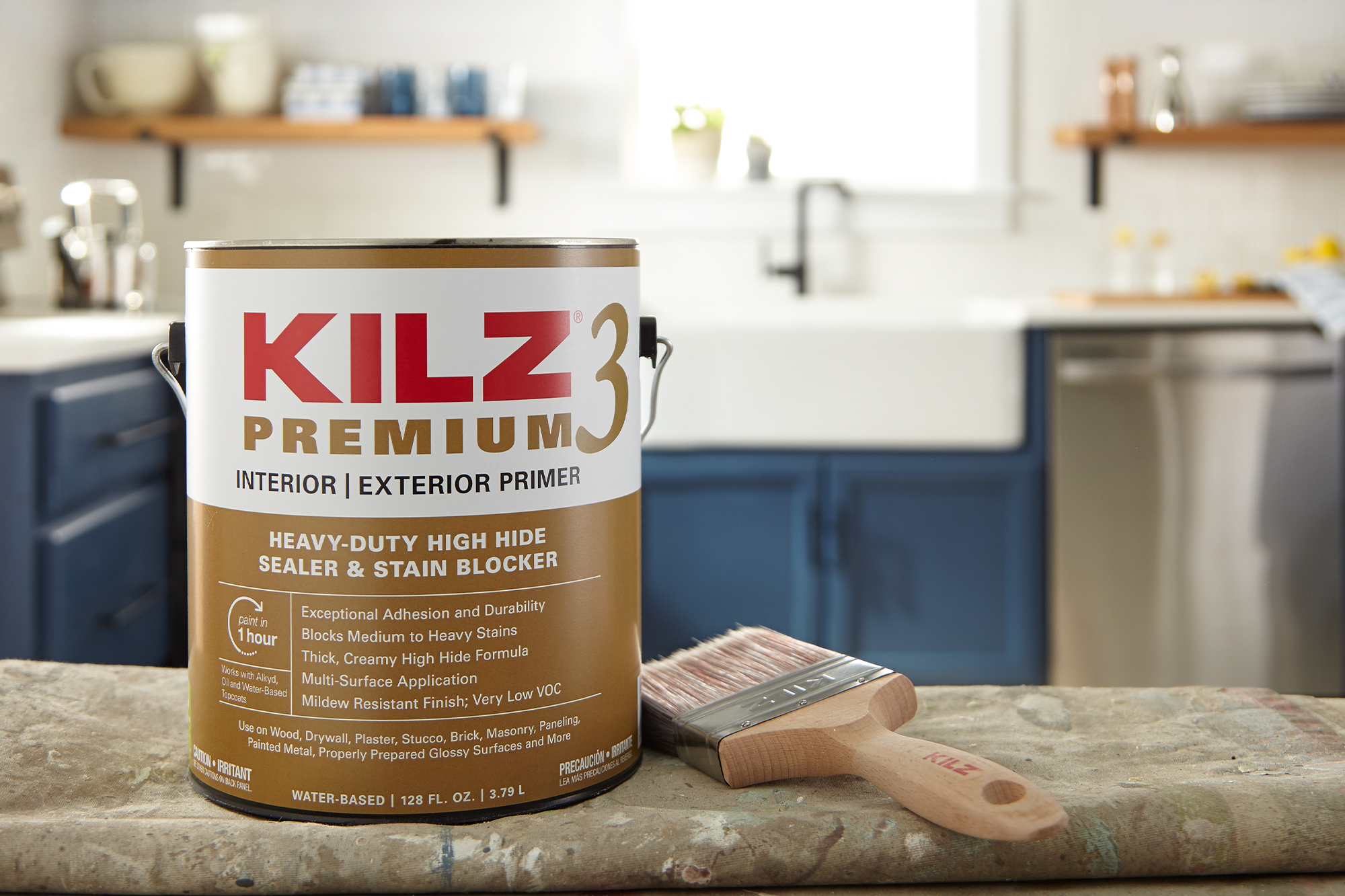
The Primer Checklist Every DIYer Needs
April 23, 2024Priming Before You Paint
No matter how difficult your project is, KILZ® Primer is here to help you achieve the results you envision with this easy primer checklist.
Priming walls before applying a coat of paint is essential to block previous stains and odors, ensure color distribution, and create adhesion for the new coat of paint.
Primer Checklist
First, familiarize yourself with the surfaces and spaces you’ll be painting. Whether you’re priming outdoor or indoor, on wood, glass, metal, or drywall, each scenario requires a specific primer and process.
Choose the Right KILZ® Primer
Getting started requires you to understand which KILZ® Primer is the right product for your surface’s unique demands.
• Both KILZ 2® All Purpose and KILZ 3® Premium are perfect for interior and exterior priming on multiple surfaces. KILZ 3® Premium is the right primer for heavy duty sealing and blocking out stains or dark colors.
• KILZ RESTORATION® is formulated for the toughest coverups, like fire damage or unbearable odors.
• If you’re applying a new coat of paint in a kitchen or bathroom, mold and mildew resistance should be prioritized with KILZ® Mold and Mildew®.
• For tough-to-paint surfaces like glass, tile, and metal, KILZ® Adhesion ensures that paint stays put.
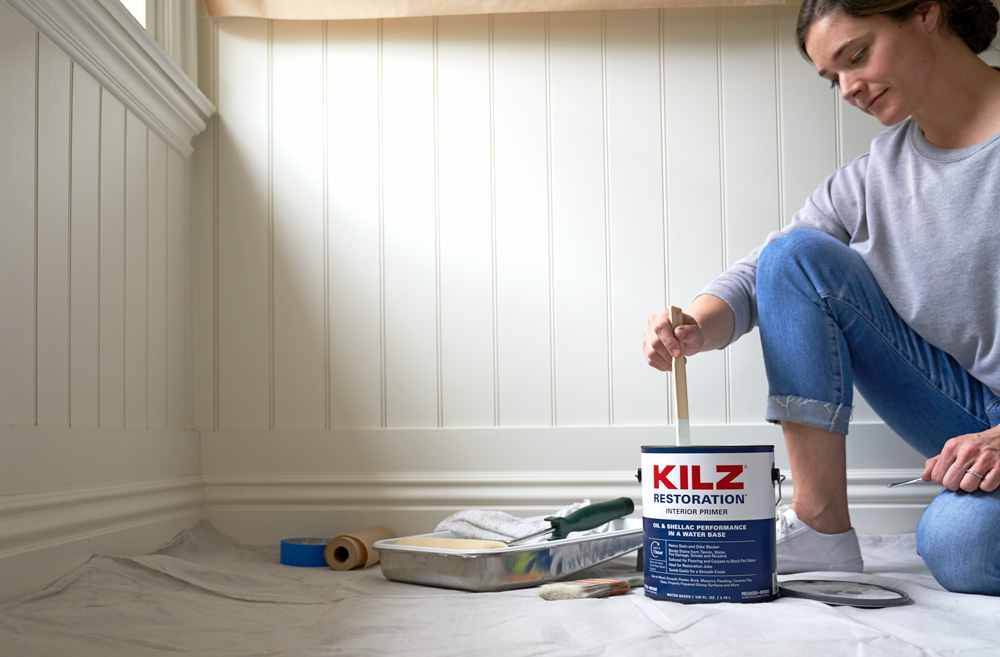
Application Tools
The tools required to prime walls to paint are:
• A drop cloth to protect floors from splatter.
• Painter’s tape for masking off areas you don’t want primer on.
• A 2-inch nylon/polyester paint brush for priming corners.
• A 9-inch paint roller with a ½ inch roller cover to prime large spaces.
• A paint tray to reload your roller with primer you pour into the tray.
• Cardboard or a towel to remove excess primer from your roller or brushes.
• Safety goggles to protect your eyes.
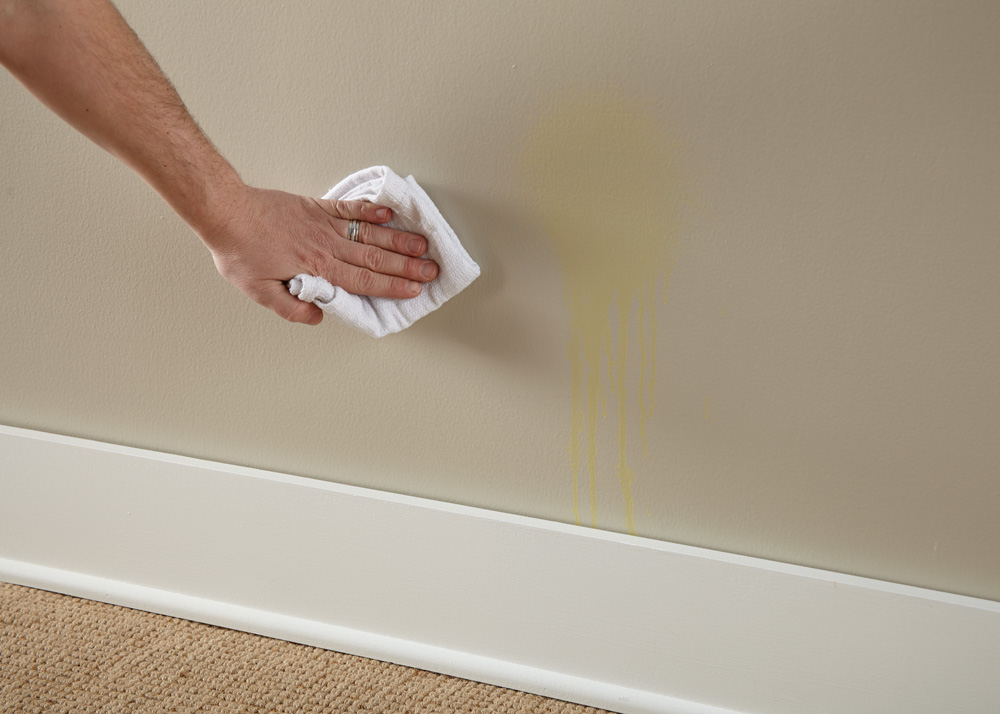
Applying the Primer
• Move any furniture from the space, then cover the floor with your drop cloth.
• Create a paint station to place all your tools.
• Tape off the necessary borders to mask whatever you don’t want your primer to cover.
• Get your paint roller and brushes ready by dampening them with water so they can absorb more primer.
• Outline or “cut in” the wall with 2-3 inches of primer. Where the corners meet, you’ll want to use your 2-inch nylon/polyester paintbrush.
• Fill your paint tray with primer, then dip in your 9-inch paint roller, making sure primer covers the whole roller. Pass the paint roller over the ridged area of the tray to remove any excess primer.
• With your paint roller, apply the primer in vertical strips inside your “cut in” area, working from top to bottom until finished.

Dry Time
Drying times depend on both your primer and surface. If multiple layers are needed, wait until the primer is completely dry before applying another coat. You can decrease drying time by creating air circulation in the room or using a dehumidifier.
• Drywall (about an hour)
• Wood (up to three hours)
• Metal (up to four hours)
Never apply paint before your primer has dried; otherwise, it will not stick, creating a mess.
You’re Ready to Prime
Now that you have an understanding of KILZ® Primers, you can undertake your next project, whether you are an amateur or expert DIYer.
→DOWNLOAD CHECKLIST
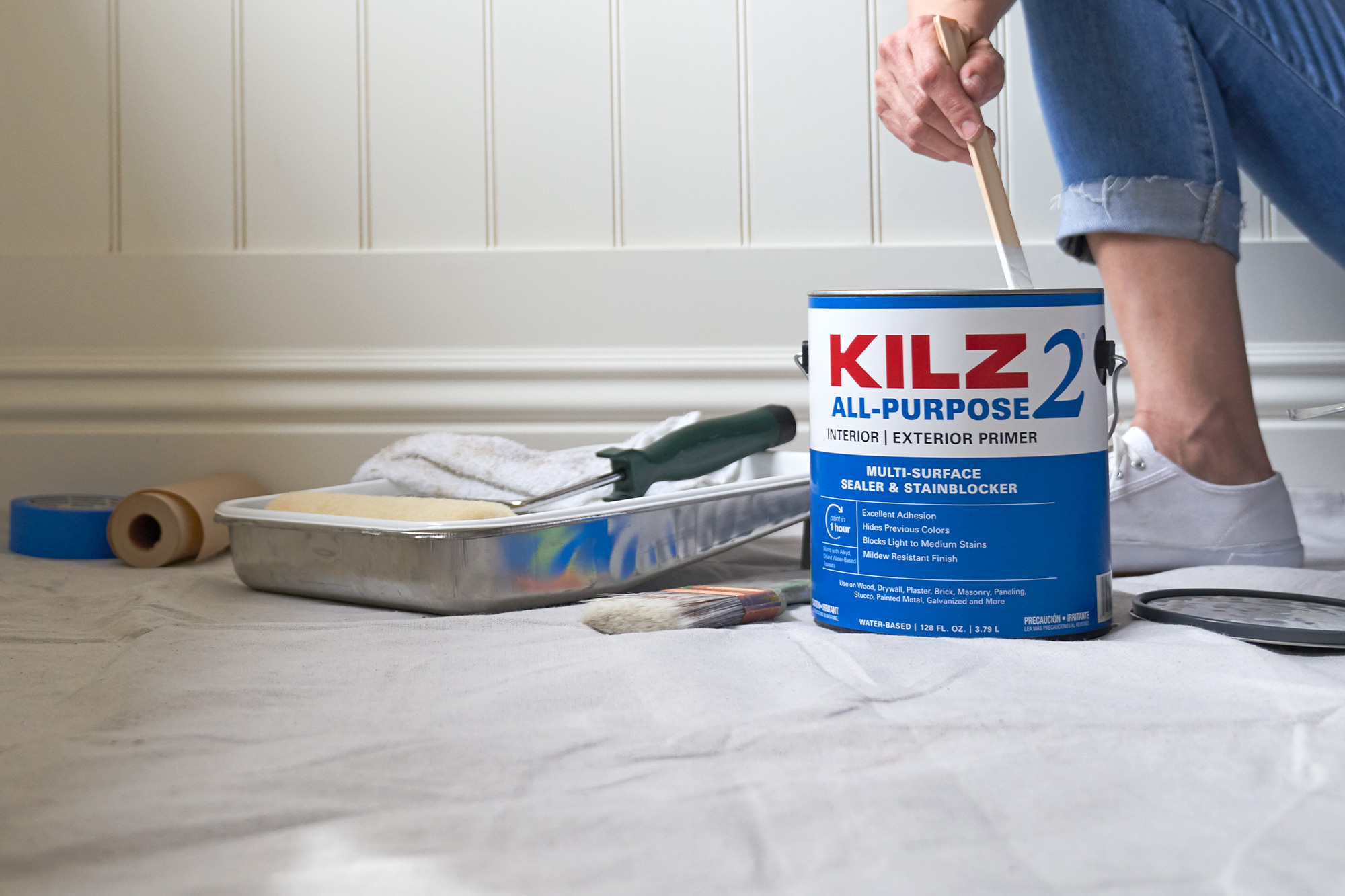
Best of Primer Tips: What Did We Learn This Year?
November 21, 2023To inspire another productive year ahead, let our pro primer tips 2023 recap be your guide. You already know how important a good primer is to any successful painting project, but the finer point may be less clear. That’s why we’re recapping some of the best primer tips of the year and taking a moment to appreciate just how much we learned.
Tip #1: Save time, money, and labor by using primer.
Because it is formulated to solve specific problems before you paint, primer creates an ideal surface for lasting results. This means there’s less likelihood that you’ll have to retouch or redo a project in the short-term. By sealing porous surfaces evenly, for example, you’ll use fewer topcoats, and since primer costs less than the topcoat, using a primer first and then applying the topcoat is cheaper than applying multiple coats of topcoat only.
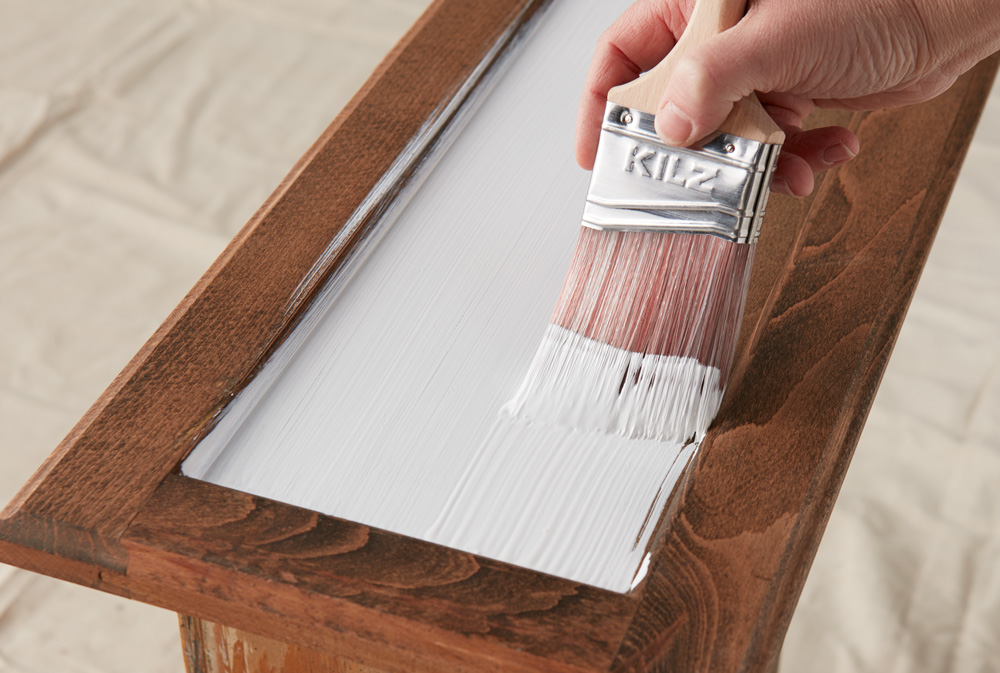
Tip #2: Choose the right primer for your substrate.
Before beginning any painting project, identify the type of surface you want to prime and paint. Different substrates accept coatings differently, which is why KILZ formulated a primer with each surface type in mind. Also take note of your surface’s condition. What circumstances should be addressed before applying a coating? Lastly, identify the environmental conditions where the surface is located. Is it damp? Will it be exposed to weather damage and temperature fluctuations? Each of these conditions dictates the primer and paint you choose to use.
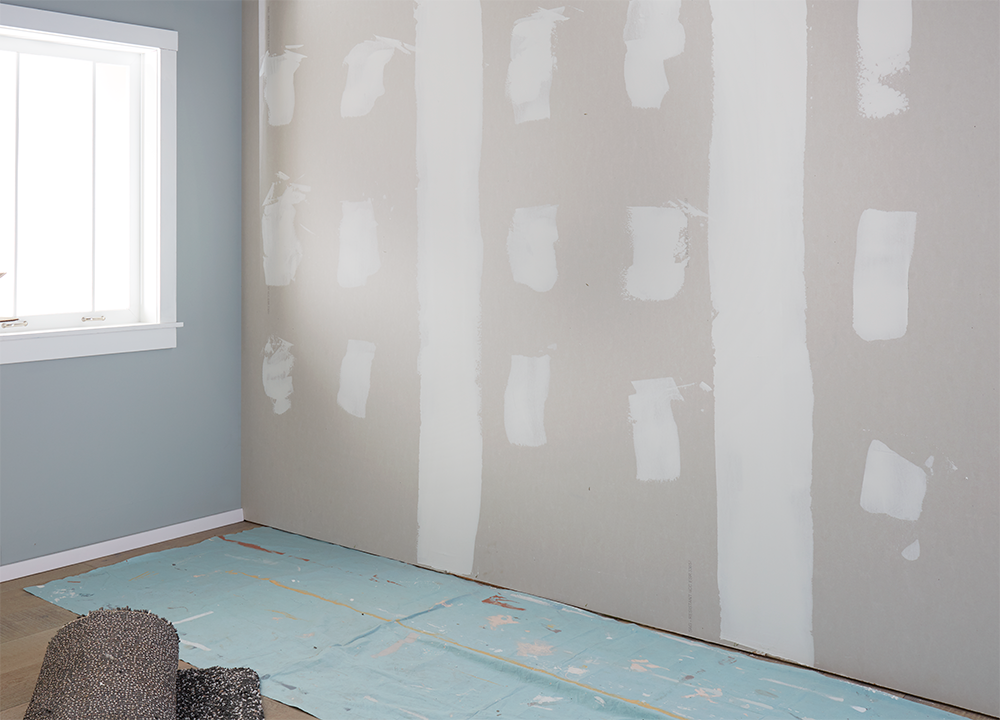
Tip #3: Know your project details ahead of time so you can prepare.
Preparation is key before starting any paint project. You should know the products you’ll need and what steps to follow. For most projects, you can trust a multi-surface primer to prepare the surface for painting, but more complex situations require a specialty formula primer—such as mold, stains, and odors. Preparing for the job beforehand will help things run smoothly from start to finish. Not sure where to start? Review this checklist.
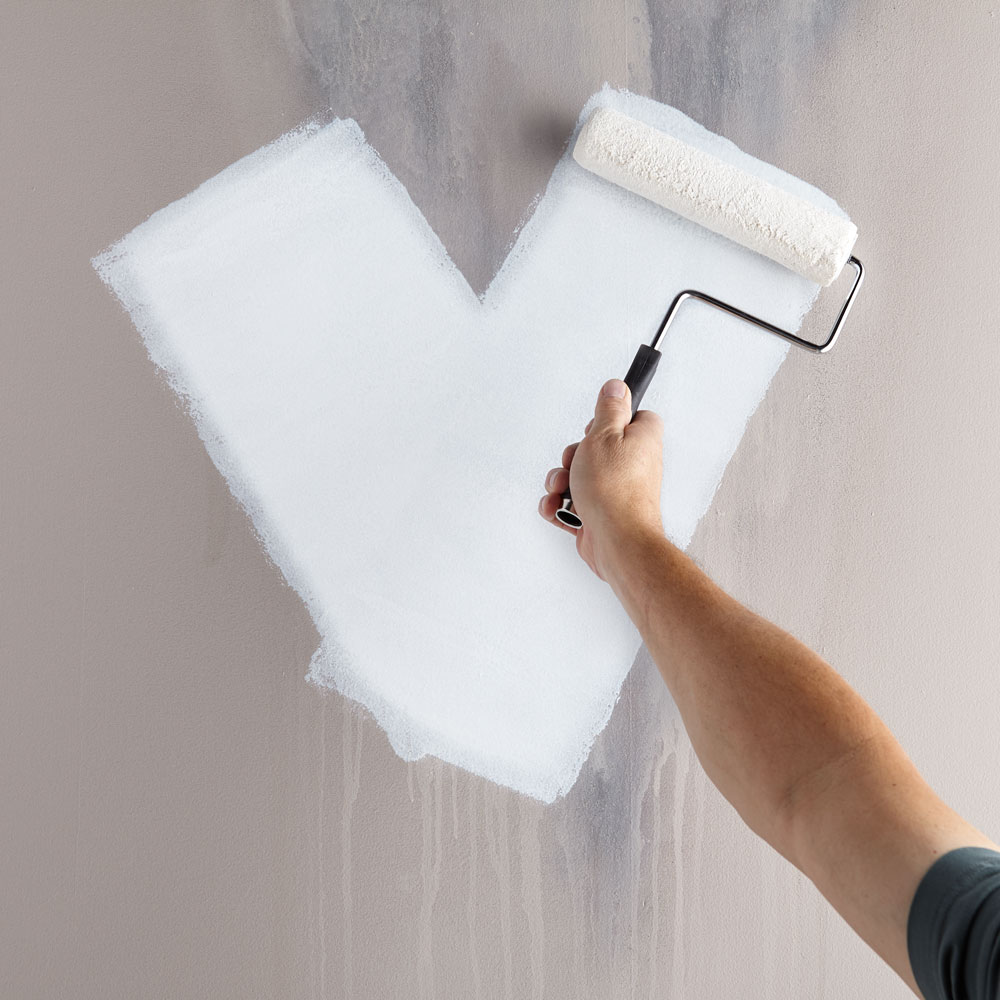
Tip #4: The right application can make a big difference.
Quality usually comes at a higher price than a cheaper alternative, but the results are worth it. Besides selecting a quality applicator, the construction of the applicator should be compatible with the chemistry of the coating being applied. Some brushes are built for water-based products, some are designed to work with oil-based products, and some will work with both. Most rollers are compatible with oil- and water-based products. This information is usually listed on the packaging, so make sure to check for it when choosing an applicator.
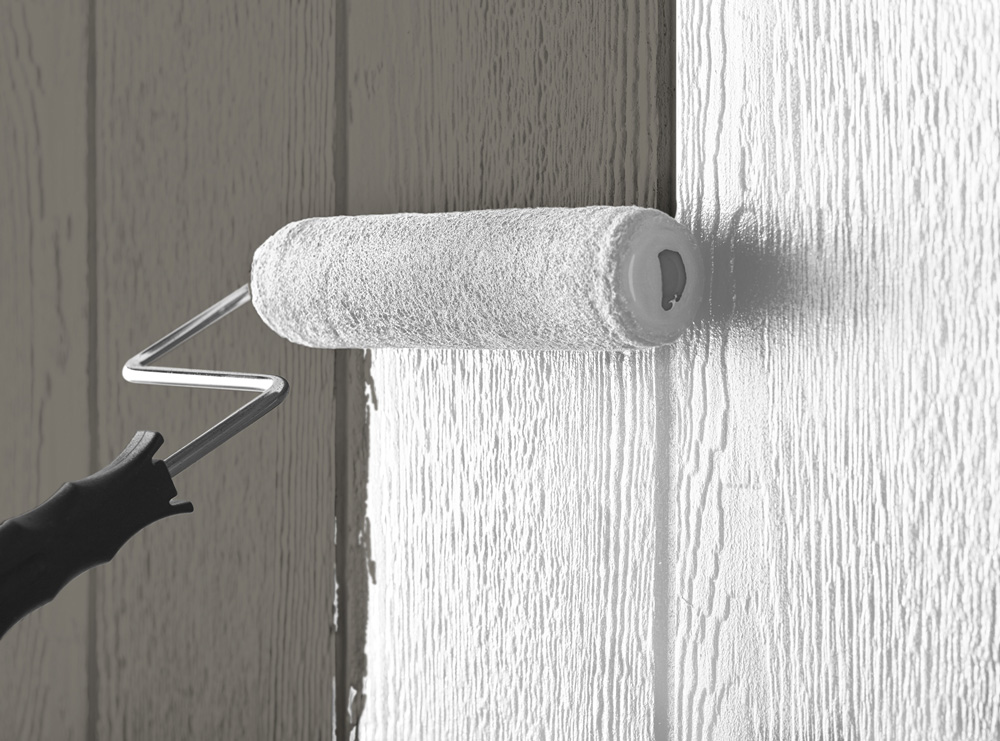
Tip #5: Know when to use primer and when paint & primer in one will work.
The idea of saving time and money by skipping a step in the painting process is appealing, and while many paint and primers in one (PPIO) boast this claim, it’s not always that simple. While it can work for some jobs, more specialized products will give you better results depending on the situation. For example, PPIO can work well on pre-painted surfaces without a drastic change in color or texture, but this is possibly the only reason to choose it. If your job is more complex than that, it’s best to opt for a specialized primer in addition to paint.
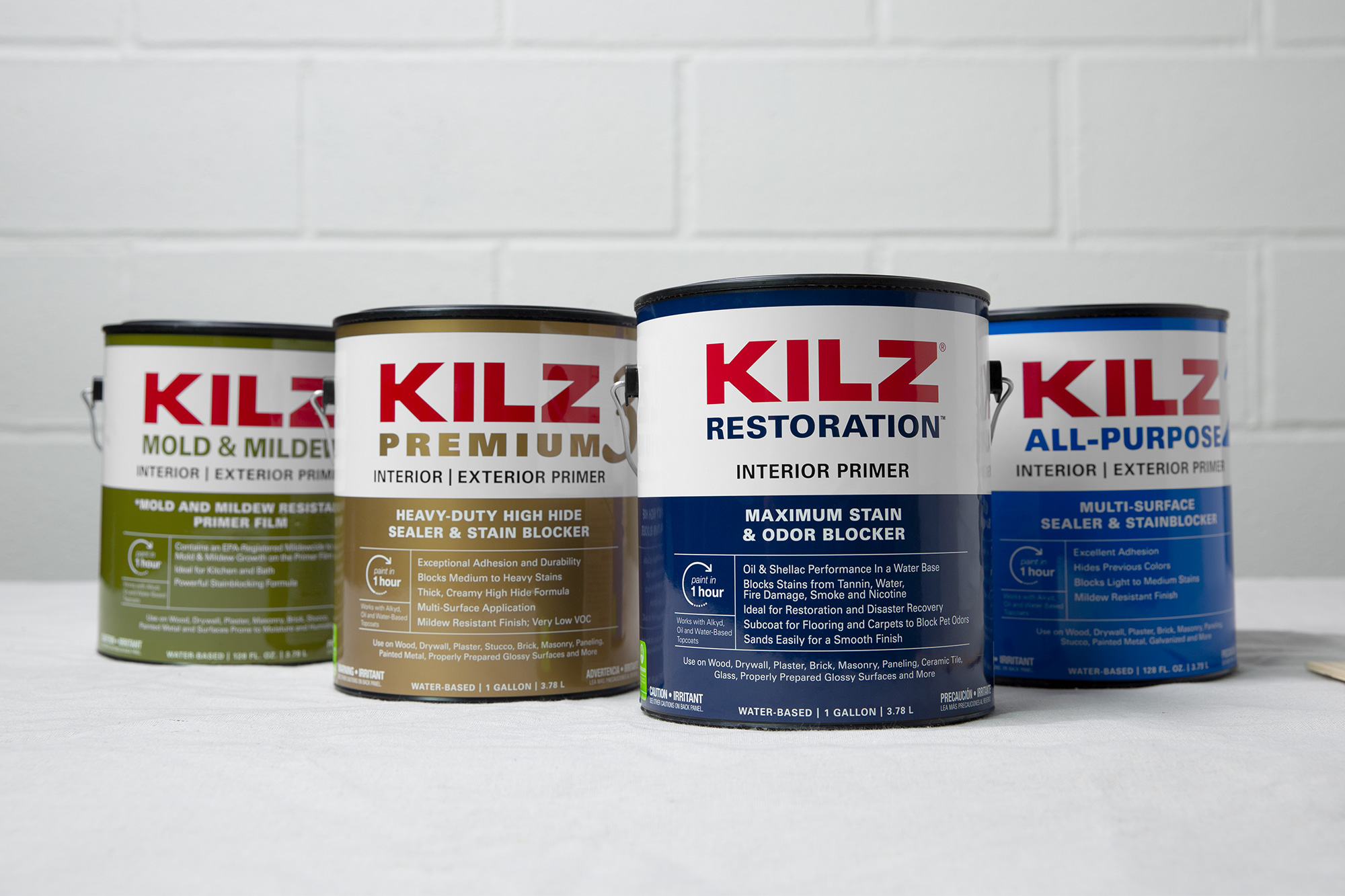
Tip #6: Understand the different types of sheen and choose wisely.
If chosen incorrectly, sheen can amplify surface imperfections, make a surface shinier (or flatter) than intended, or not provide enough durability for the space. Some sheens are easier to clean than others and can provide a barrier against moisture, mildew, and other grime. The darker and richer a paint color is, the more colorant it contains, which boosts sheen. If you’ve chosen a rich or dark paint, and you don’t want it to turn out super shiny, choose one with a lower sheen. In the same vein, if painting a large, sun-washed, or flawed surface, a lower sheen paint is best for hiding imperfections.
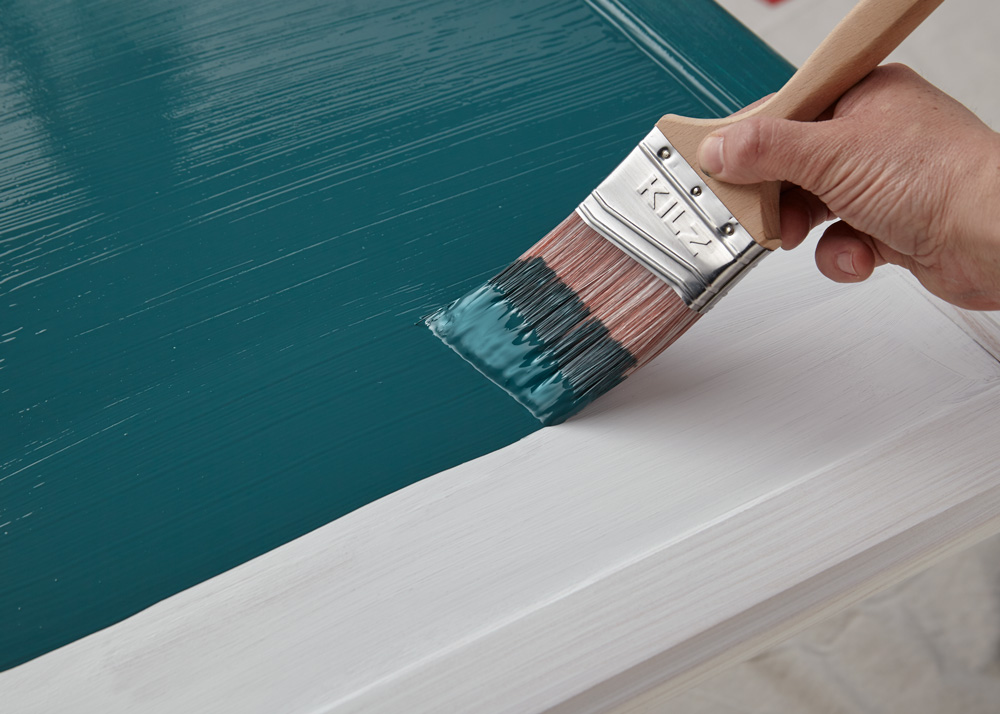
For more helpful tips like these, be sure to check back in with us so that you can tackle all your future projects with confidence. KILZ® Primers are here to make your DIY dreams a success. We hope you had a productive year and can’t wait to see what will inspire you in 2024.
Always remember to refer to our website kilz.com or product back labels for additional information on which primer is right for your project and detailed instructions on how to apply our products. Check out our Coverage Calculator to understand your estimated paint needs for your upcoming project.

Destination Restoration Rewind: A Look Back at our Best Projects of the Year
November 7, 2023At the end of the year, we like to reflect on some of our biggest accomplishments, and this year, we’re looking to our Destination Restoration series for inspiration. For this exciting video series, we enlisted the help of two paint, construction, and design experts to make over individual rooms in a single-family home. With their help, we refreshed and modernized four outdated rooms, saving time and money in the process, and extending the life of this charming residence.
Let’s recap our favorite moments from Destination Restoration and get excited to tackle another year of home improvement.
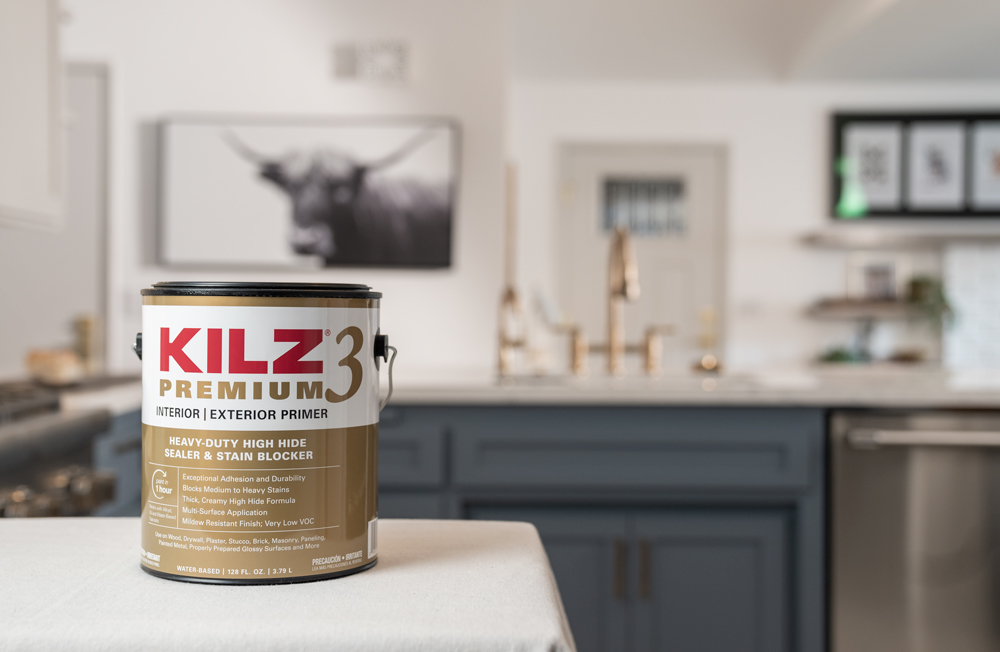
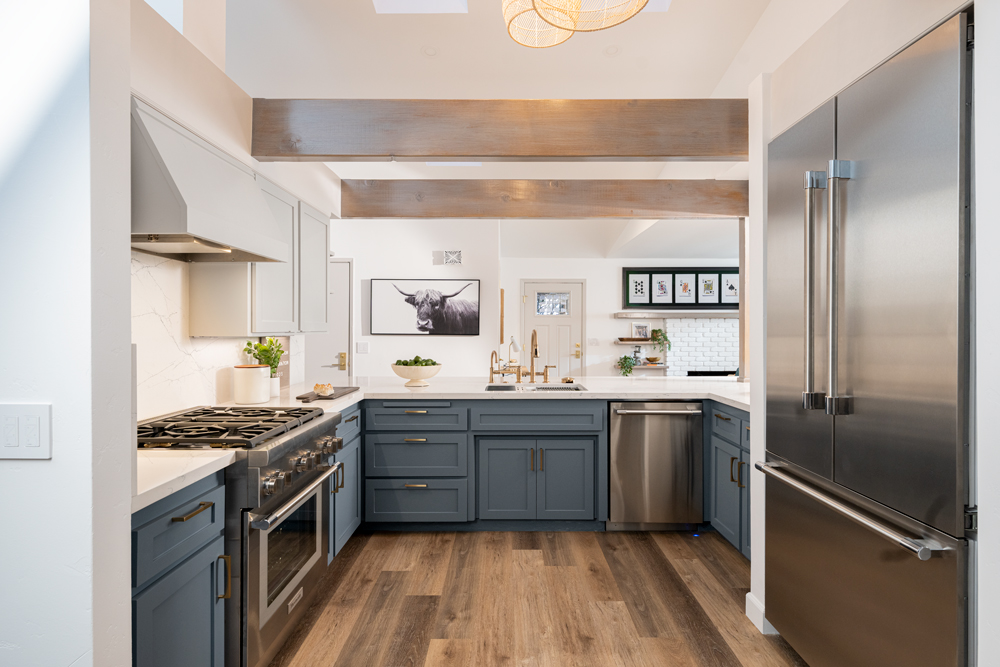
If you’re looking for kitchen remodeling ideas to inspire your DIY dreams, this is a great example of how you can make a big design change while keeping the integrity of the room intact. Our team of pros took a dark and dated kitchen, and, with a vision and some ingenuity, achieved a bright and modern space, renewed for the next generation. The striking cabinet transformation came to life with some light refinishing, KILZ 3® Premium Primer and a fresh coat of paint.
See the full project here.
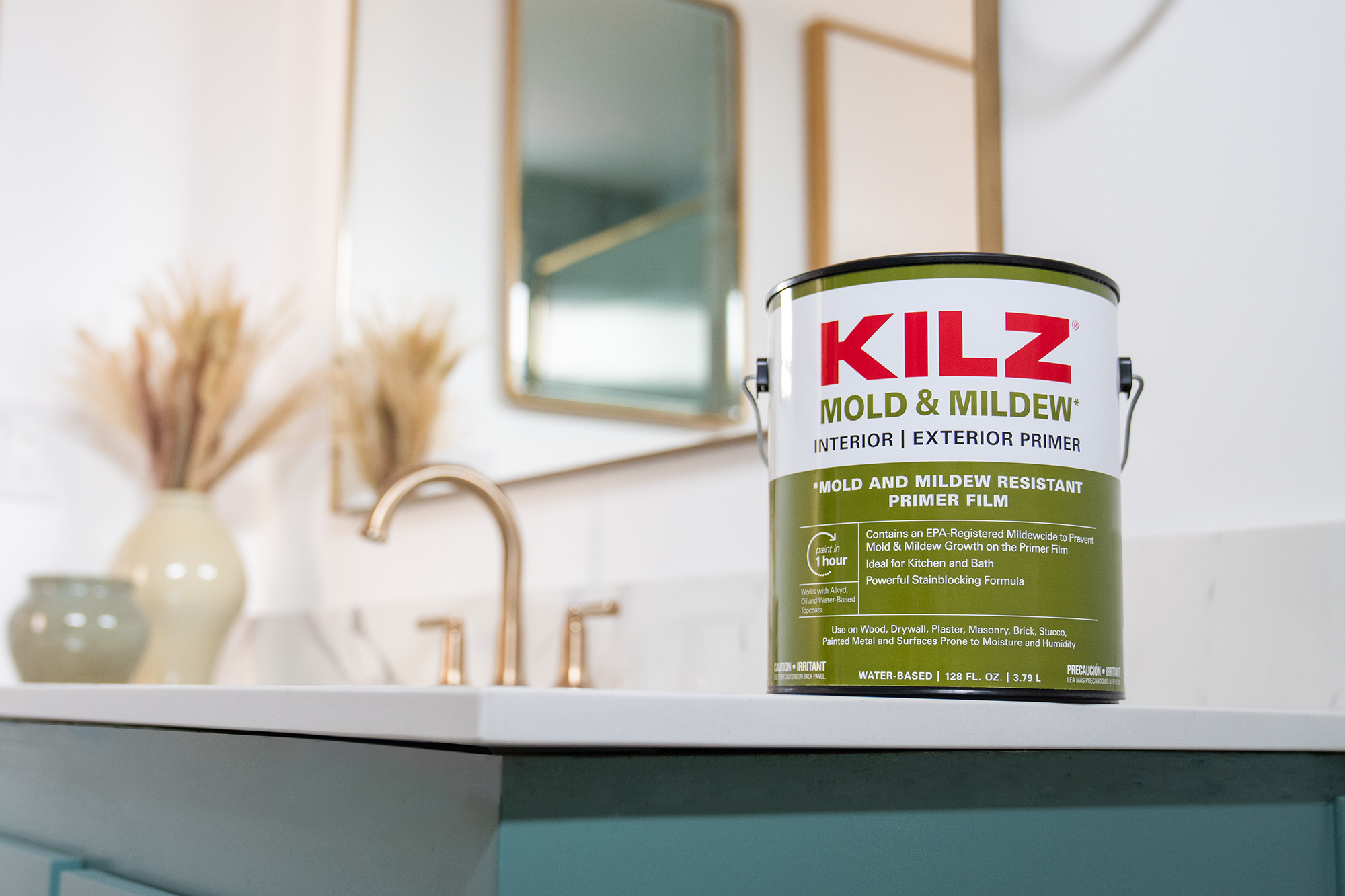
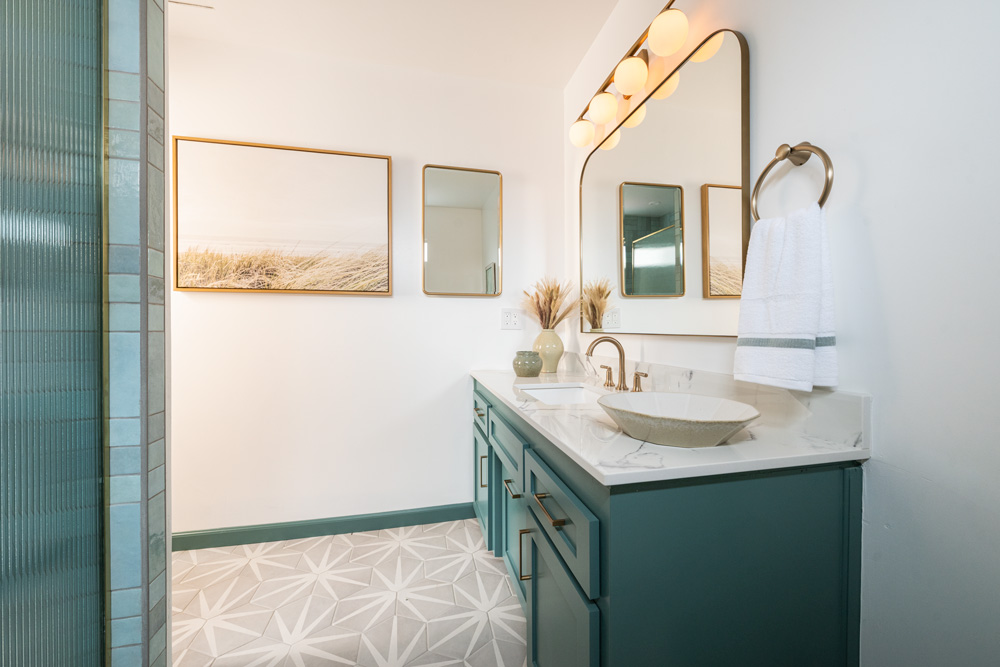
If you have a DIY bathroom project in mind for the new year, be sure to check out this stunning refresh for tips. Our Destination Restoration team made this makeover look easy to give you the bathroom inspiration you need to tackle your own transformation in 2024. With just a few cosmetic fixes, and the help of KILZ Mold & Mildew Primer, our pros converted this outdated room into a beautifully modern space that will last for the next generation to enjoy.
See the full project here.
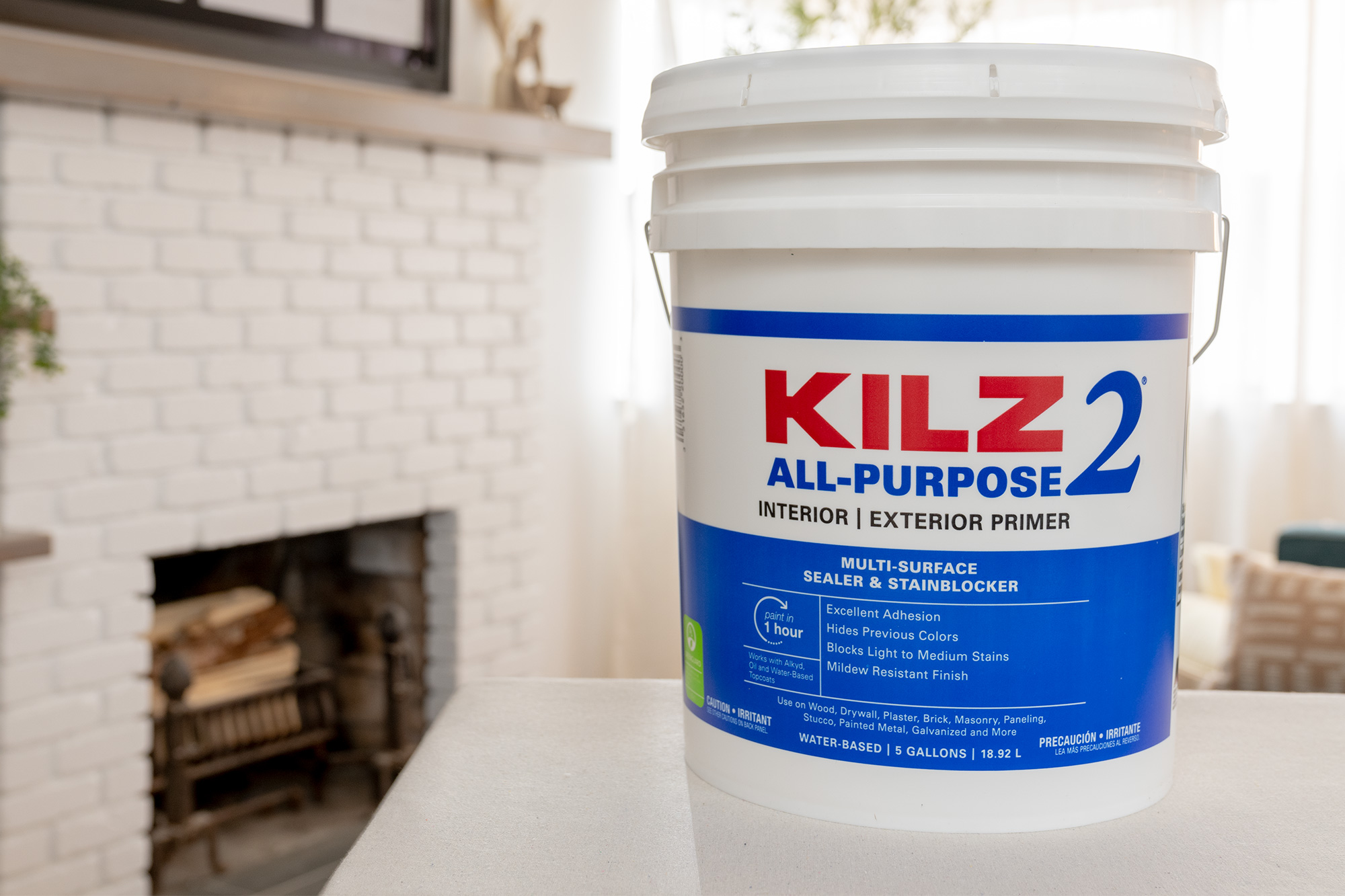
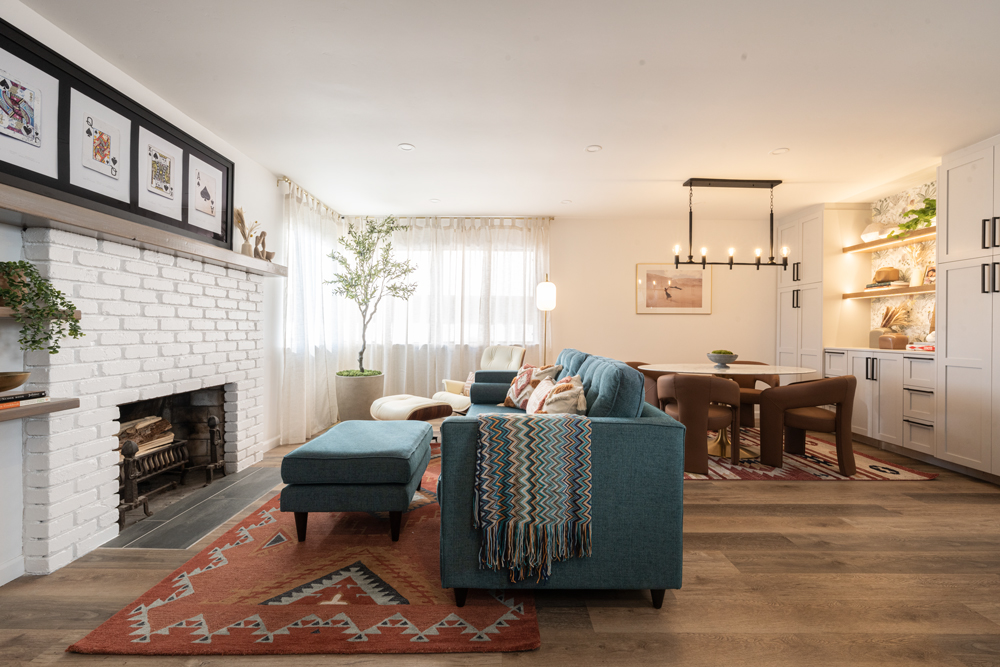
The power of KILZ 2® All-Purpose Primer did wonders for this open-concept living/dining room, where it helped to completely restore an old fireplace and brighten up the room. Rather than put the home through an expensive and time-consuming remodel, our pros reimagined the space and rejuvenated it for years to come with a few simple changes. DIY living room inspiration at its peak, this is a great example of how you can breathe new life into an older home while sticking to a budget.
See the full project here.
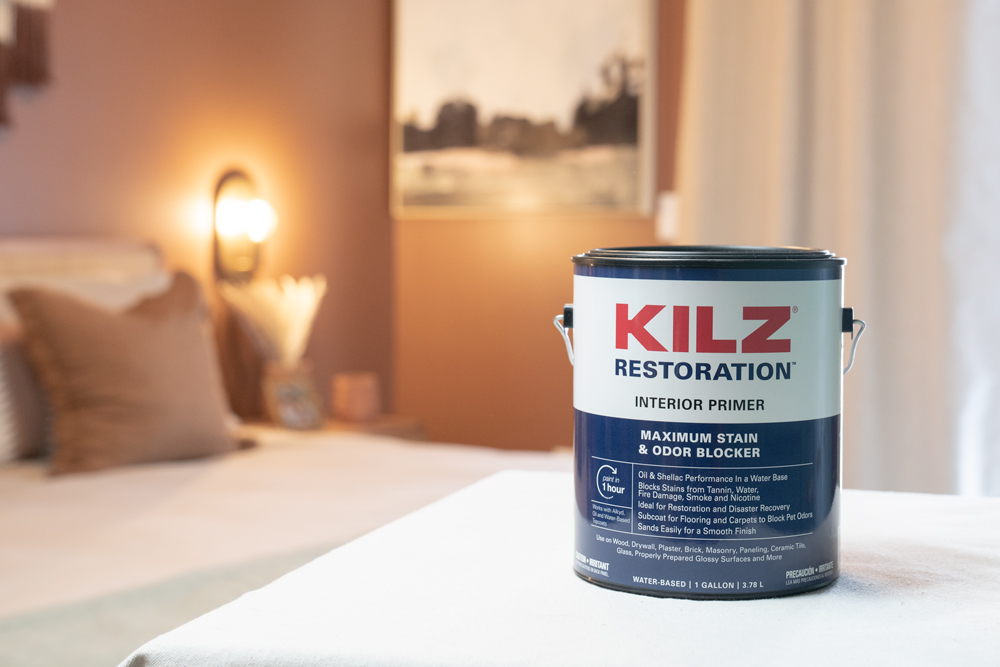
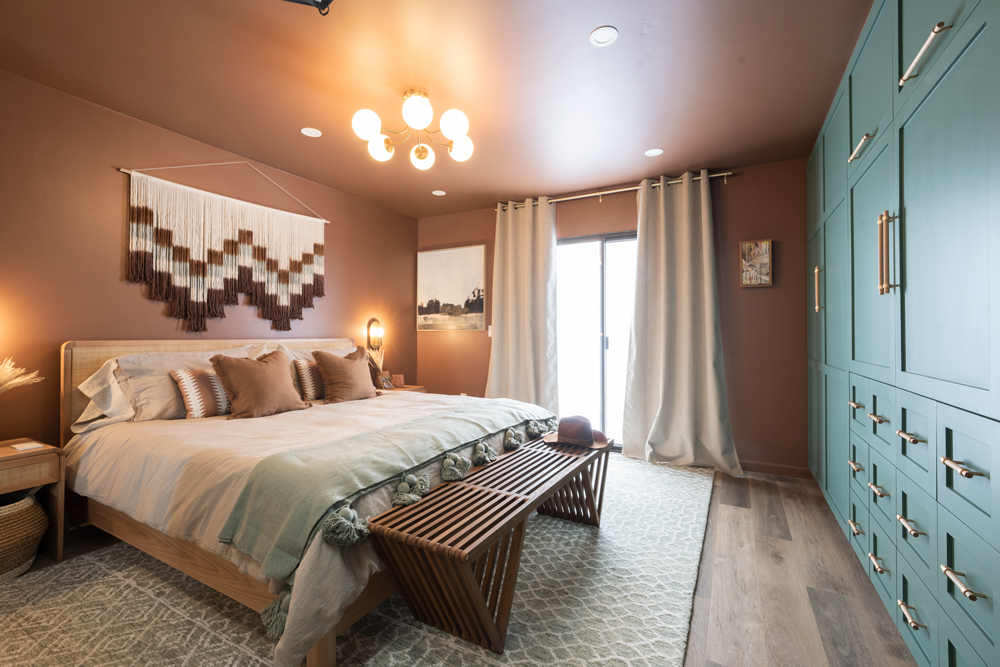
We finish our look back at the series with the primary bedroom remodel. This room’s biggest issue was that it had a large ceiling stain from water damage. Our pros didn’t let this stop them, and instead, used KILZ RESTORATION® Interior Primer to cover and seal the stain and a beautiful terracotta color paint to transform this room into a warm and luxurious space. To finish the look, they upgraded the old closet with a custom, built-in storage unit with a hidden TV display, painted in a complimentary forest green. We couldn’t be more pleased with the result, which reminds us of a chic and cozy desert retreat.
Note: The cause of the water damage had been remedied prior to our pros coming in to fix the cosmetic side.
See the full project here.
This was another great year for home makeover inspiration, and even though the year is winding down, our motivation is full steam ahead. Whether you’re taking it easy or busy organizing next year’s DIY game plan, we hope these projects inspire you to bring your dream home to life. Thanks for spending the year with us. We can’t wait to see what you choose to tackle in 2024.
Always remember to refer to our website kilz.com or product back labels for additional information on which primer is right for your project and detailed instructions on how to apply our products. Check out our Coverage Calculator to understand your estimated paint needs for your upcoming project.
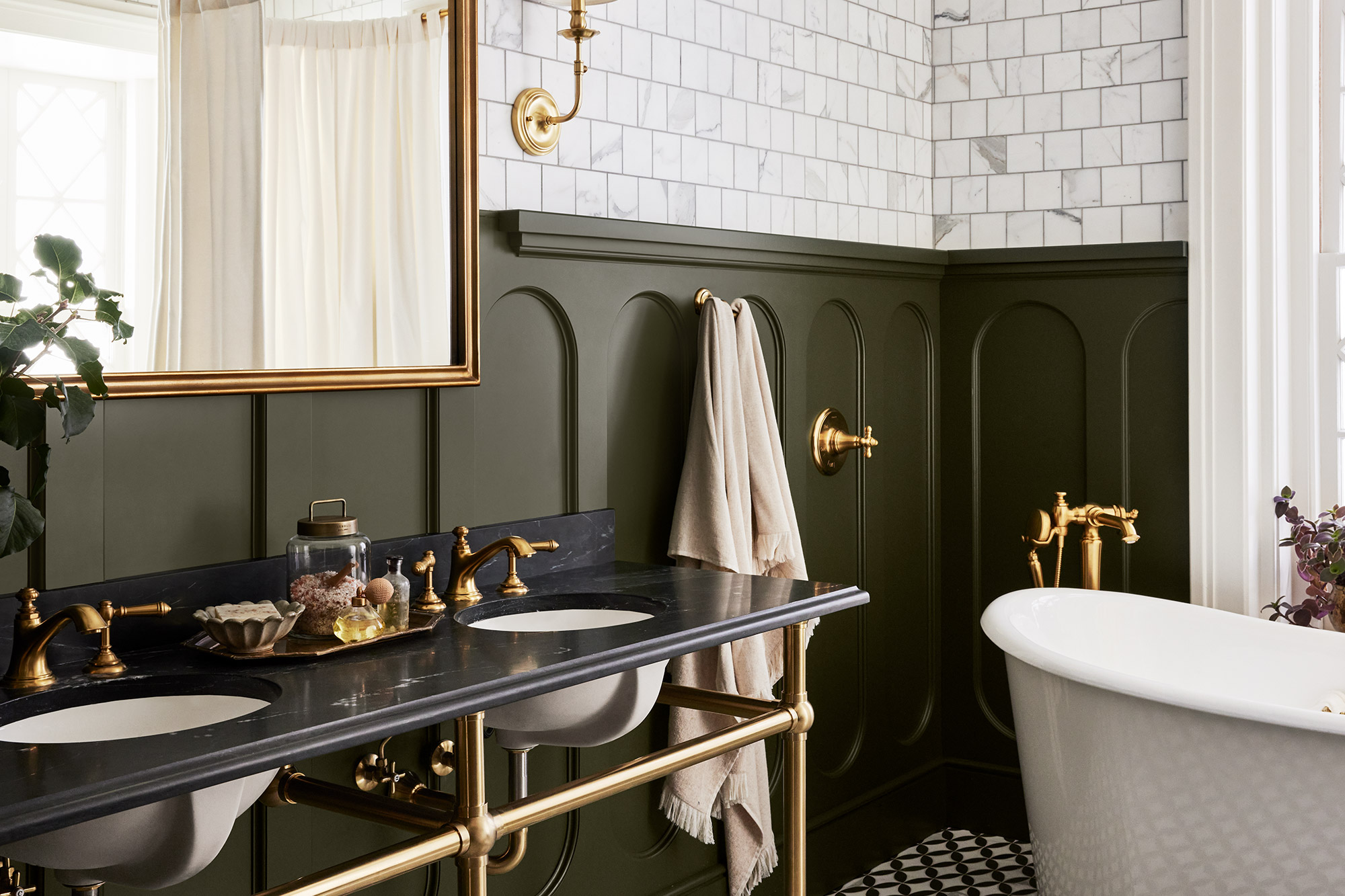
THE CASTLE COLLECTION: HALL BATH
August 3, 2023Welcome back to another color and room feature from The Castle Collection from Magnolia Home by Joanna Gaines®!
This time we will be talking about the hall bath. Even though sometimes overlooked, it serves not only as a functional space for guests and family members, but also as an opportunity to make a statement with design. This hall bath reflects both elegance and style while inviting a sense of serenity and relaxation.
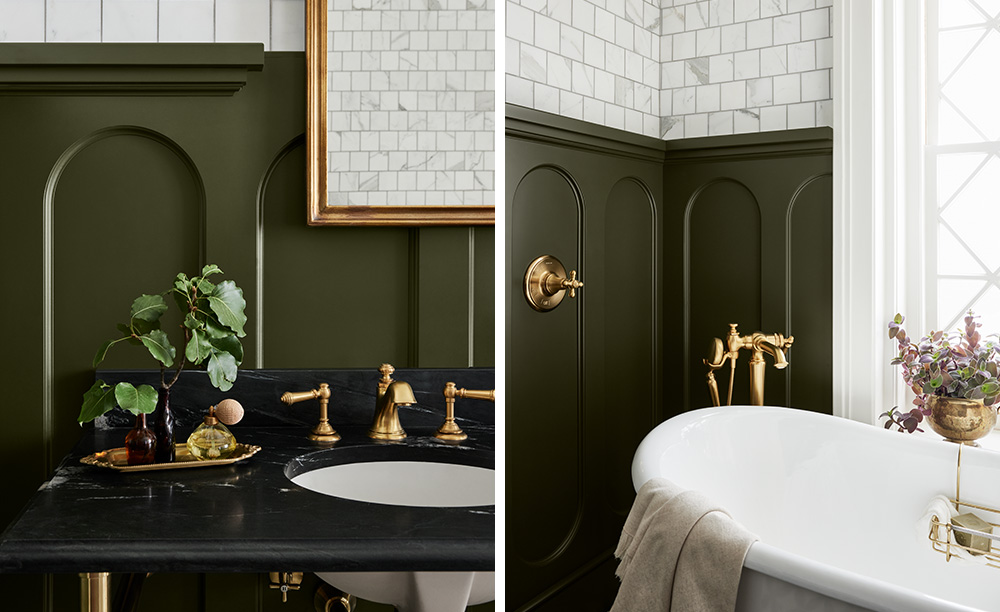
The Magnolia Home Castle Collection interior paint color, Step Stool Green, is a lively, deep olive that makes this bathroom stand out and invite you in. Using the Magnolia Home by Joanna Gaines interior paint on the board and batten, paired with white tiles, makes this room modern – yet full of the Castle’s original charm.
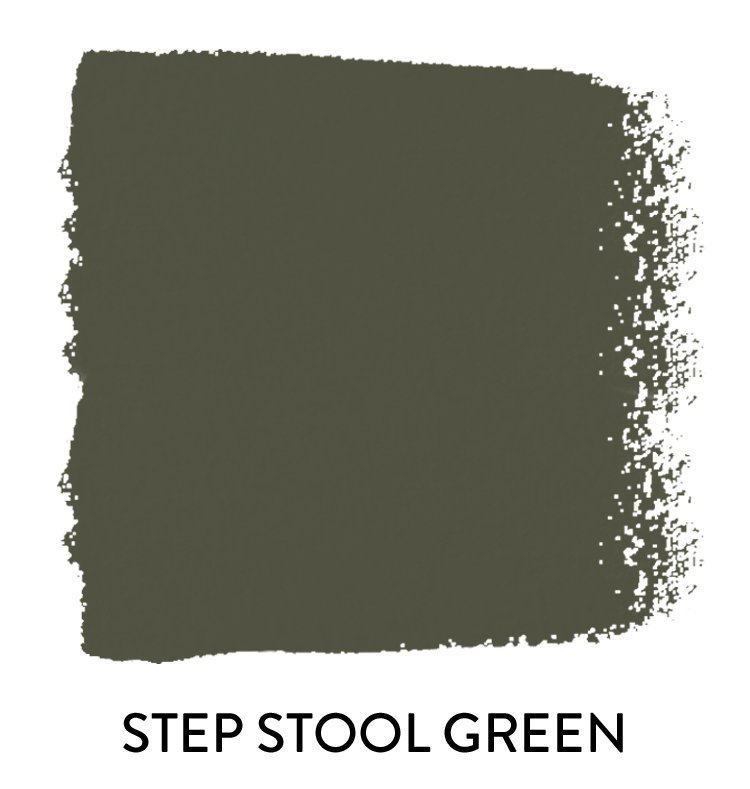
“Olive green, a bold and rich natural color, brings a comforting, earthy richness to any space.” – Joanna Gaines
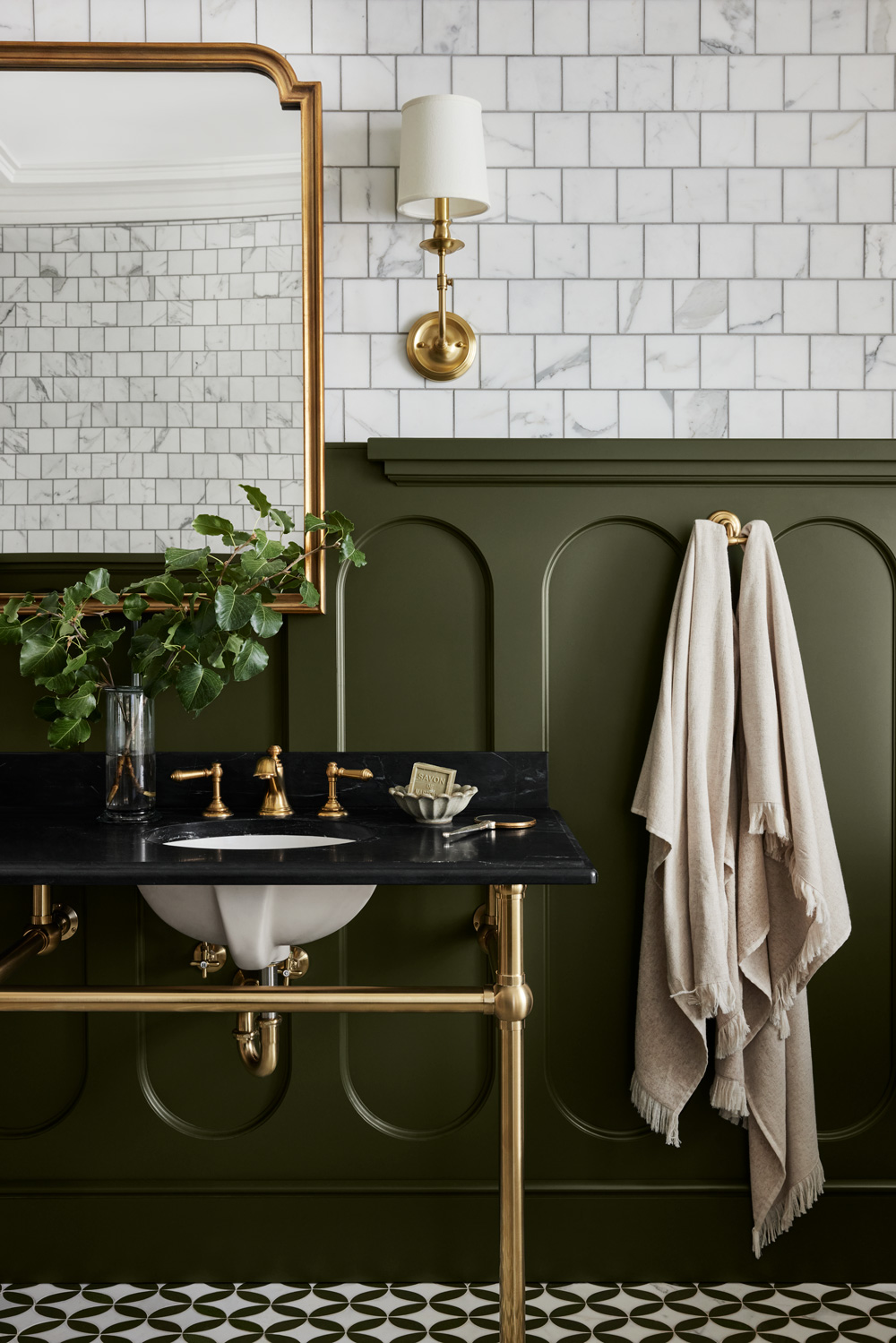
By selecting brass fixtures for the faucets, mirror, and lighting, and adding in some final decorative touches, the bathroom becomes one of the most transformative rooms in the castle. Paired with plants, antique décor and large windows for natural lighting, the Step Stool Green interior paint color from the Magnolia Home by Joanna Gaines Castle Collection was able to highlight the bathroom’s beauty while still maintaining its rich history.
With colors from the Magnolia Home by Joanna Gaines Castle Collection palette and the right materials, you too can transform a plain hall bath into a stylish oasis.
Check back here at the Perfect Finish to learn more about the rooms in the castle, and their specific colors and descriptions.
Read about the Drawing Room here.
Want to start a project using one of the Magnolia Home by Joanna Gaines paint colors? The palette below complements Step Stool Green and highlights its rich earthy tones.

Shiplap
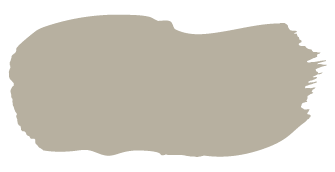
Renewed
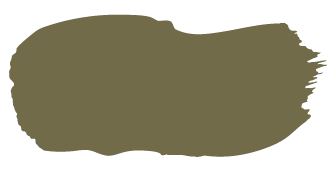
Landscape

Conservatory
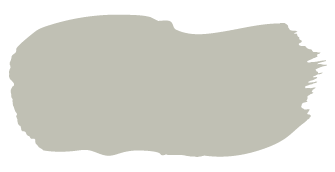
Clean Lines
“Where can I buy Magnolia Home by Joanna Gaines Paint?”
These paint colors are now available at Ace Hardware, Lowe’s, and Magnolia.com/shop.
Always remember to refer to our website kilz.com or product back labels for additional information on which primer is right for your project and detailed instructions on how to apply our products. Check out our Coverage Calculator to understand your estimated paint needs for your upcoming project.
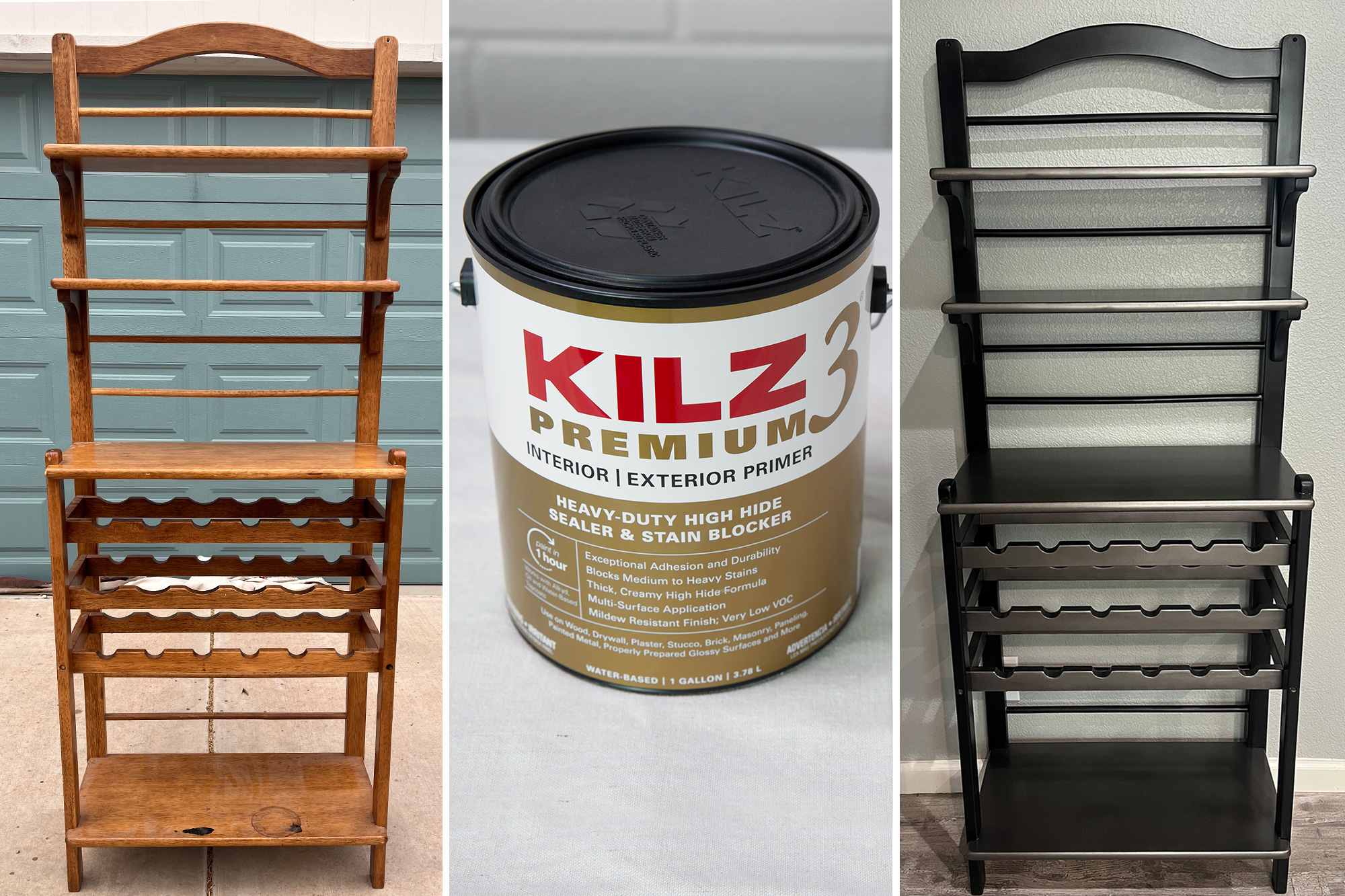
Pro Spotlight: James Mansour Shows The Power of a Good Primer when Upcycling
June 30, 2023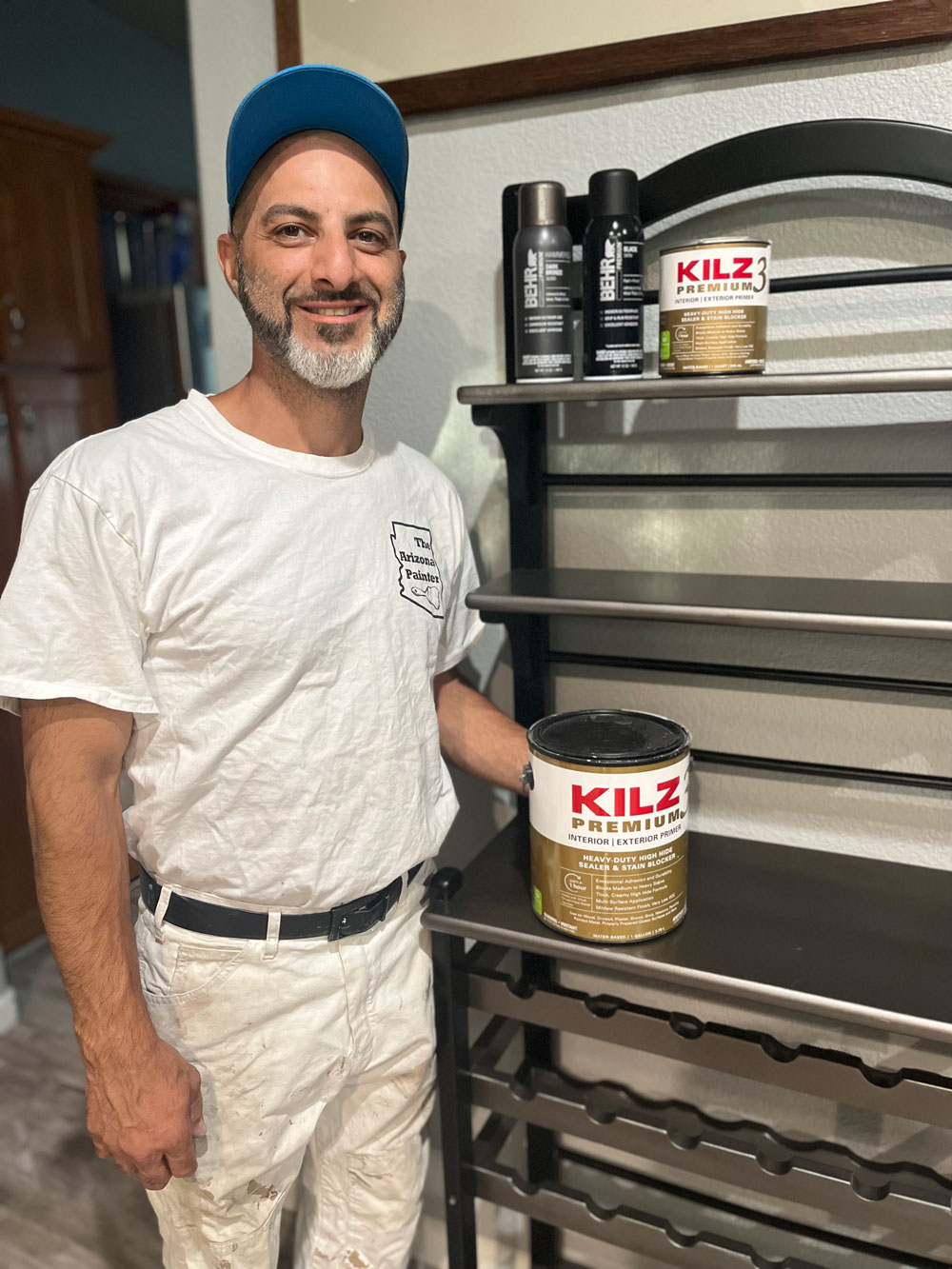 My name is James Mansour, and I am the owner and operator of Mansour Valley Painting in Mesa, Arizona. I also go by The Arizona Painter online where I work to educate and share my love of painting, including the intricacies of the craft. With over 20 years of experience, my company specializes in exterior and interior painting while always emphasizing the importance of proper prep work. I am partnering with KILZ to highlight one of my favorite products, KILZ 3® PREMIUM Primer. I chose a DIY upcycling project because I am a huge supporter of teaching my customers and online audience how to properly prepare surfaces for paint, and then use paint to completely transform an object or space.
My name is James Mansour, and I am the owner and operator of Mansour Valley Painting in Mesa, Arizona. I also go by The Arizona Painter online where I work to educate and share my love of painting, including the intricacies of the craft. With over 20 years of experience, my company specializes in exterior and interior painting while always emphasizing the importance of proper prep work. I am partnering with KILZ to highlight one of my favorite products, KILZ 3® PREMIUM Primer. I chose a DIY upcycling project because I am a huge supporter of teaching my customers and online audience how to properly prepare surfaces for paint, and then use paint to completely transform an object or space.
I love the idea of upcycling. Not only does it allow you the freedom to create a unique accent for your living space, but it is also sustainable and environmentally friendly. Upcycling is a term used to describe the process of repurposing old, unwanted things into unique, creative, and new items. By choosing to upcycle I am also contributing to waste reduction, conservation of natural resources, and allowing myself an opportunity to innovate. I knew I had to find the perfect piece for this project, so I started by paying a visit to a few local Goodwill stores. After much deliberation, I found a wooden wine rack that my wife loved. It was the perfect size and shape for the dividing wall between our kitchen and living room. In order to kick this project off right, I would need the perfect primer. I chose KILZ 3® PREMIUM Primer because it provides excellent adhesion, high-hide coverage, and excellent stain-blocking performance, making it the ideal primer for surfaces like wood.
Along with the KILZ 3® PREMIUM Primer, I used the following supplies to get started: a scrubber pad, 220 and 320-grit sandpaper, latex gloves, drop cloths, and mineral spirits. As a helpful tip, be sure to properly follow the safety instructions listed on the product labels or online for the correct application and use of the products.
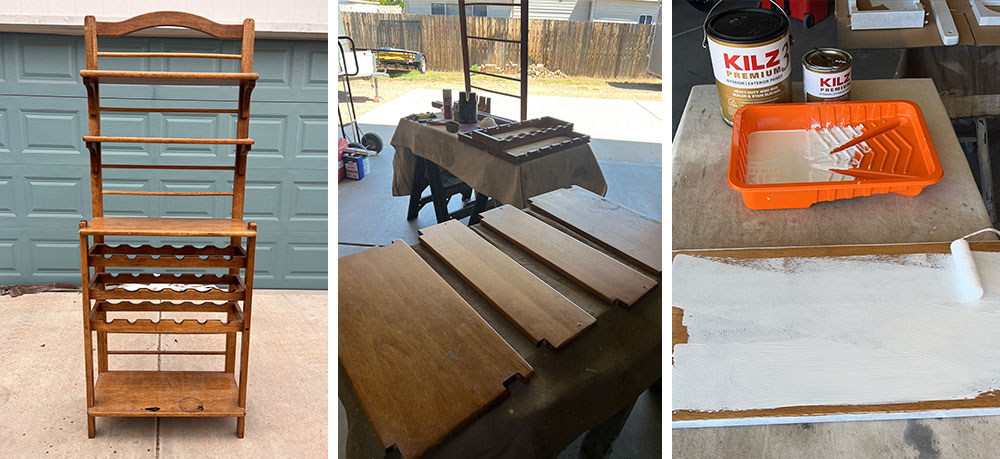
Setting up my workspace was the next step. I used two tables to hold each piece of the wine rack after the disassembling process. With a screw gun in hand, I broke the wine rack down into individual pieces. I then used 220 grit sandpaper to remove the current finish and wiped each piece clean with mineral spirits, preparing them for the first coat of primer. I used a small ½-inch thick roller nap to apply KILZ 3® PREMIUM Primer. After allowing it to dry for only an hour, I lightly sanded all surfaces again and then was able to apply a second coat using the same size roller nap. Due to the mil thickness of the primer, it fills in the wood grain and any small scratches and imperfections in the wood, providing a perfectly smooth surface for paint application.
Since this piece will get used quite often, the superior adhesion provided by KILZ 3® PREMIUM Primer will prevent the topcoat from scratching and chipping, ensuring a longer lifespan. After the surface was properly primed and restored, I allowed it to dry for 24 hours. Once completely dried I used 320 grit sandpaper to smooth down all surfaces in preparation for the topcoat. For this project, I decided to use BEHR PREMIUM™ Spray Paint in Black Satin for the main legs and shelf brackets. Then I used BEHR PREMIUM™ Spray Paint with a Hammered Finish in Dark Bronze on the shelves and wine racks to give the piece more visual interest with a two-toned finish.
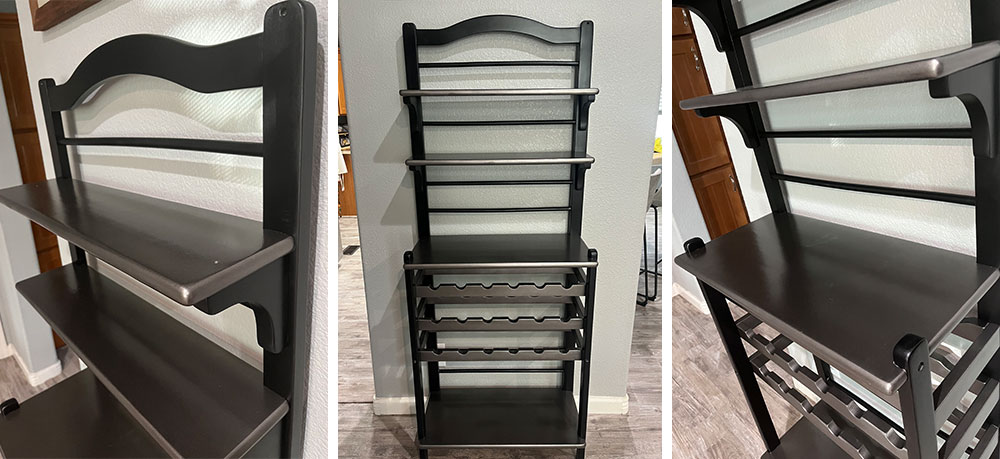
Finally, after another 24 hours of drying time, the rack was ready to be reassembled. It is important to give this additional cure time to make sure the surface is completely dry, and all the products are working together to provide the sleek, durable, and long-lasting finish I hope to get. Taking the time to prepare the surface properly helps save time and money as KILZ 3® PREMIUM Primer offers dependable and consistent results. Placing the piece in the perfect location on the divider wall, I felt I had achieved my desired outcome. It was another job done right with an Instagram-worthy finish, and a piece I can be proud of for years to come.
Thanks for joining me on another project,
James Mansour
The Arizona Painter
To learn more about primer solutions, visit kilz.com.
Always remember to refer to our website kilz.com or product back labels for additional information on which primer is right for your project and detailed instructions on how to apply our products. Check out our Coverage Calculator to understand your estimated paint needs for your upcoming project.

What’s Really in the Can? Primer vs Paint & Primer in One
June 29, 2023Primer vs. Paint and Primer: Can All-in-One Do It All?
If you can skip a step in the painting process and still get the same results, it seems like a no-brainer. Many paint and primer in one (PPIO) products boast this claim, but should you always combine these steps and skip using a separate primer?
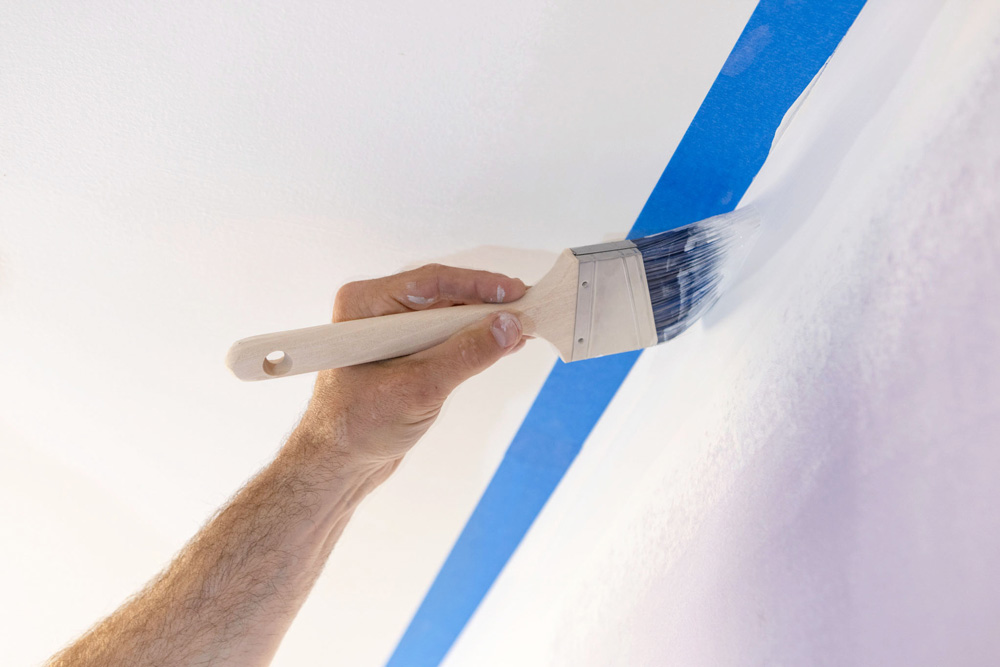
When to Choose a Self-Priming Paint
The benefit to using PPIO is that you can achieve similar results in less time. However, there are some things to know before you choose to go this route.
PPIO can work for some jobs, but different products will give you better results depending on the situation. For example, PPIO can work well on pre-painted surfaces without a drastic change in color or texture. However, this is possibly the only reason to choose it.
Why You Should Prime Separately
The goal of any primer is to prepare the surface for a coat of paint. This ensures good adhesion to the substrate and the topcoat. You may also need to block stains and odors, protect walls from mold or mildew growth, change the color, or refresh an old or damaged surface. Be mindful of the nature of your job before deciding to forgo primer as a first step, as it is often explicitly formulated to alleviate many of these surface problems, whereas an all-in-one product is typically not.
When to Choose a Primer
Suppose a surface has never been painted, as with drywall, a traditional primer is a must. If painting a glossy surface with less glossy paint, priming beforehand will ensure adhesion, and your results remain uniform. Priming separately is essential if painting over oil-based paint with acrylic or latex.
Other cases that require a primer before paint include:
• Any bare surface
• Porous surfaces
• Raw, unfinished wood
• Knotty wood
• Woods with tannins – like Cedar or Redwood
• Uncoated metal
• Unfinished drywall
• Masonry
• Stained surfaces
• Slick surfaces – like tile or laminate
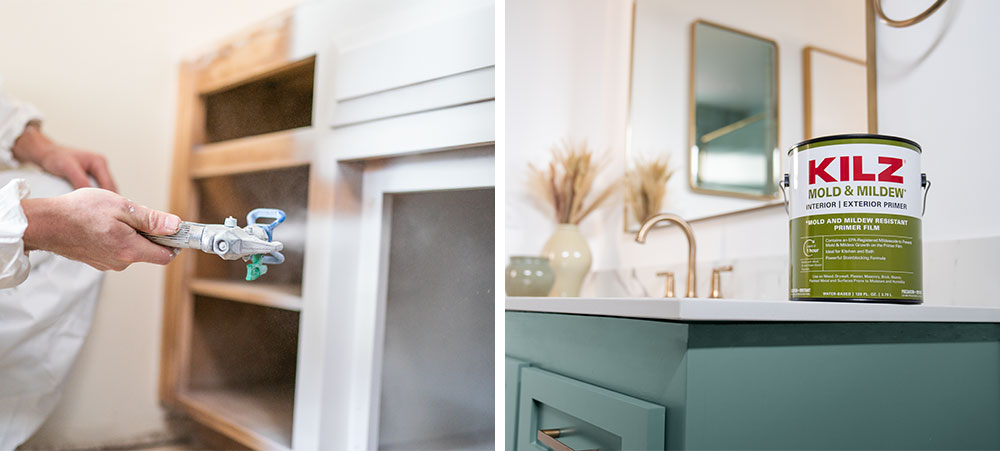
Summary
Whether you choose to go the all-in-one route or choose a separate primer and paint, choosing high-quality products suited for your surface’s condition is crucial. KILZ® primers are formulated for your specific surface issues, such as KILZ RESTORATION® to block tough stains like water damage or KILZ® MOLD & MILDEW to create a mold and mildew-resistant film for use in high-humidity rooms. KILZ 3® PREMIUM is designed to have a thicker formula to improve customer experience and hide. No matter the surface, you can be sure there’s a primer formulated for the job. When you consider how much time and money you invest in your project, choosing the best quality products from the start makes all the difference.
Come back for more tips, tricks, and inspiration, and as always, happy DIY-ing.
Refer to our website, kilz.com, or product back labels for additional information on which primer is right for your project and detailed instructions on applying our products. Check out our Coverage Calculator to understand your estimated paint needs for your upcoming project.
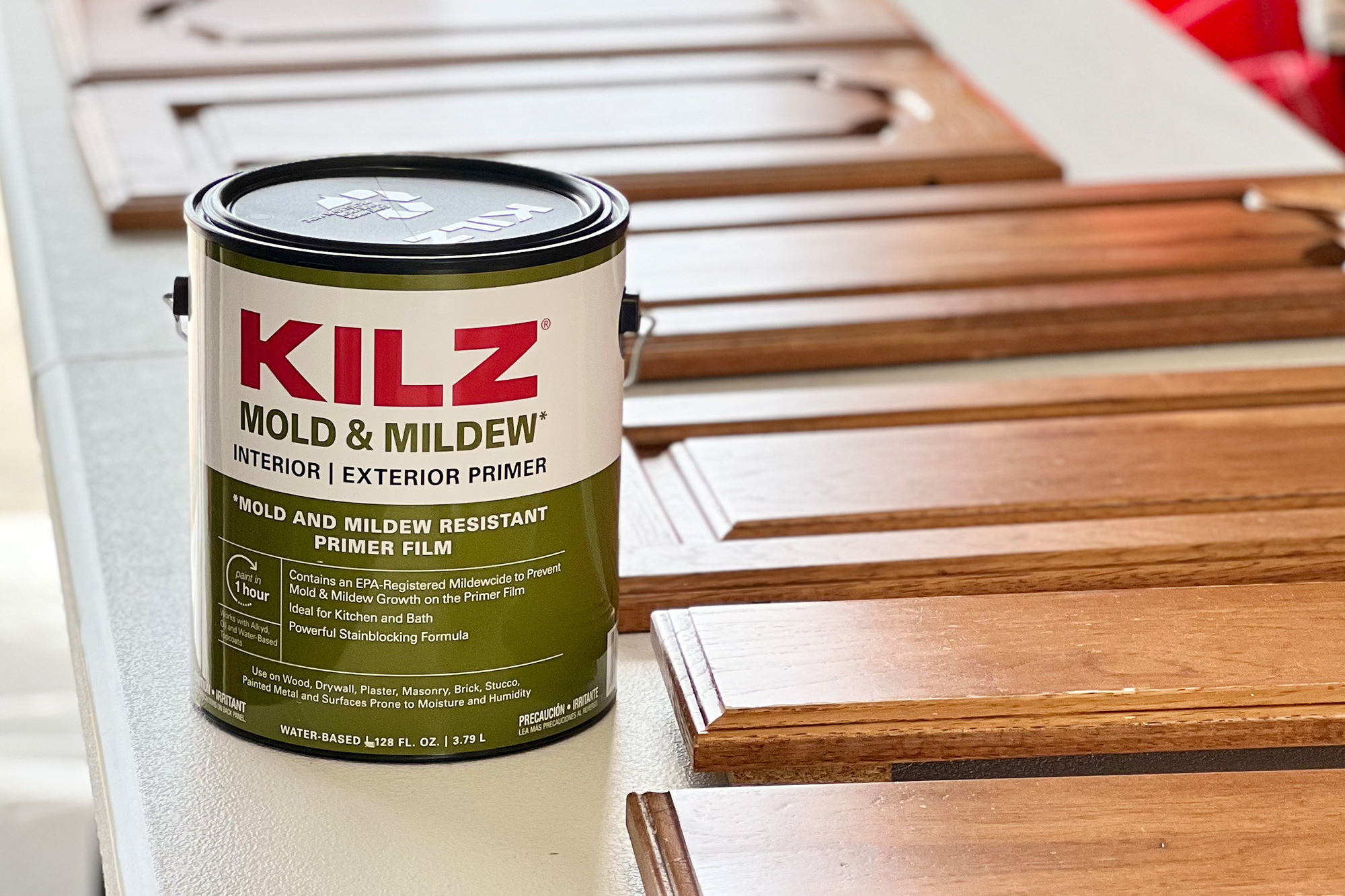
Pro Spotlight: Update Bathroom Cabinets with Britney Mroczkowski of Build It Brit, Inc.
May 31, 2023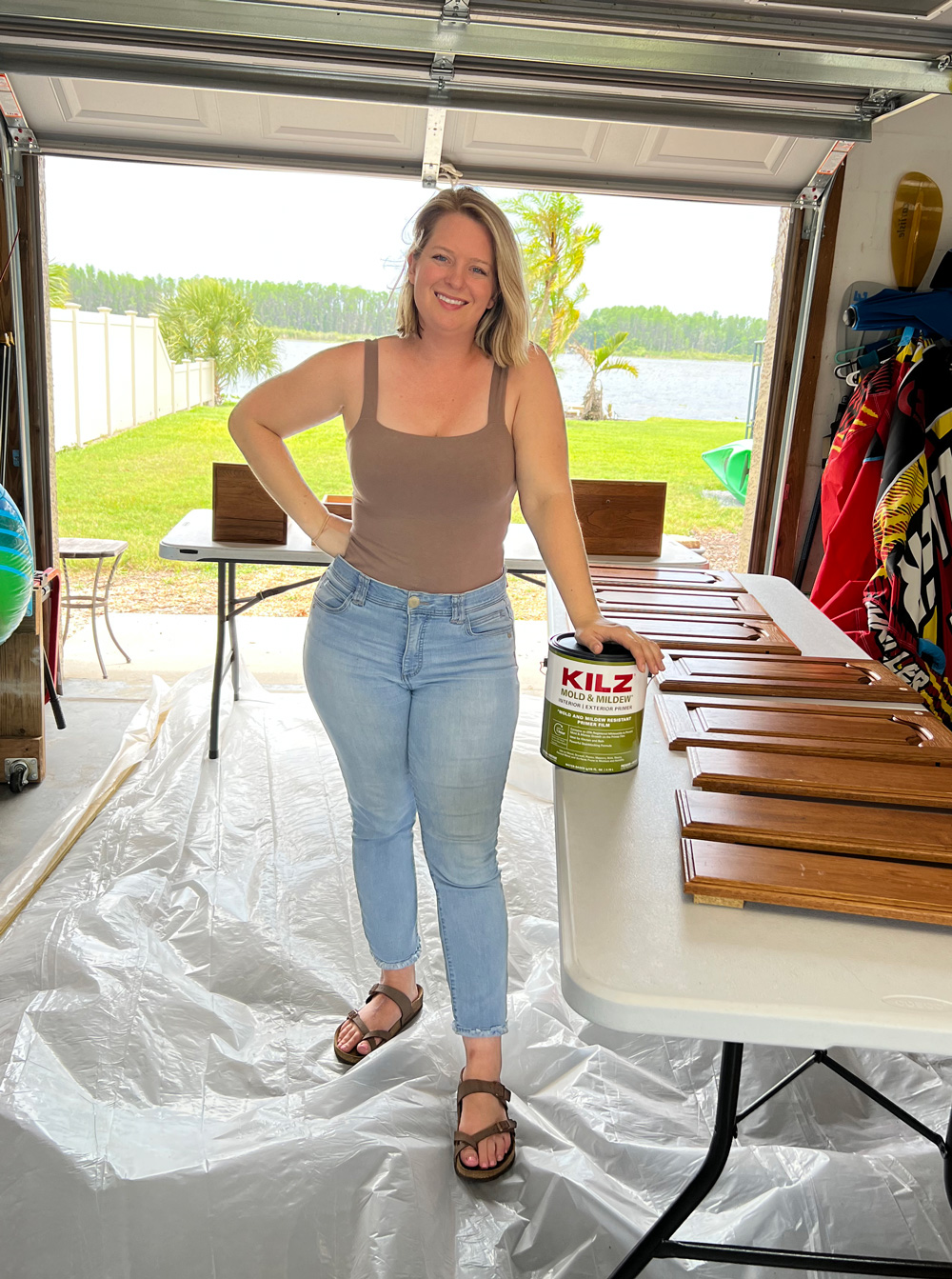 As a licensed general contractor and real estate investor, I know that priming is a fundamental step in completing any paint project. Without primer, paint may peel, crack or flake, resulting in a poor and unsatisfactory finish. And when it comes to achieving a flawless and Instagram-worthy finish, primer is absolutely essential. KILZ® Primers are a good choice as they offer consistent, dependable results.
As a licensed general contractor and real estate investor, I know that priming is a fundamental step in completing any paint project. Without primer, paint may peel, crack or flake, resulting in a poor and unsatisfactory finish. And when it comes to achieving a flawless and Instagram-worthy finish, primer is absolutely essential. KILZ® Primers are a good choice as they offer consistent, dependable results.
Recently, I decided to do a quick weekend project to update my mom’s ensuite bathroom cabinets. The bathroom has beautiful solid wood cabinets but are a little outdated with a medium-to-dark wood finish. The bathroom has also not been renovated in over 20 years and needed a modern refresh. Painting the cabinets was the perfect solution to updating the space quickly while also making the room brighter.
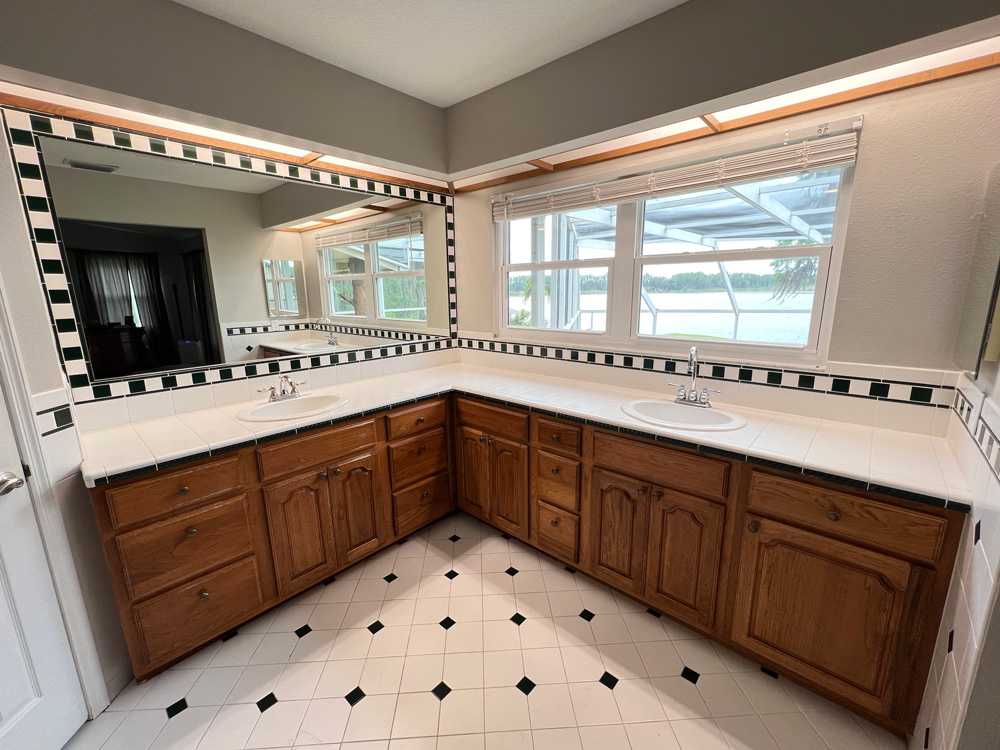
Her primary suite is located on the second floor of the home overlooking a beautiful lake just outside Tampa, Florida. She has been in this home for over 35 years and raised our family here, so it was nice to be able to give back to our family home. To minimize the mess, I removed the cabinet drawers and doors and took them downstairs to the garage where I set up a workstation.
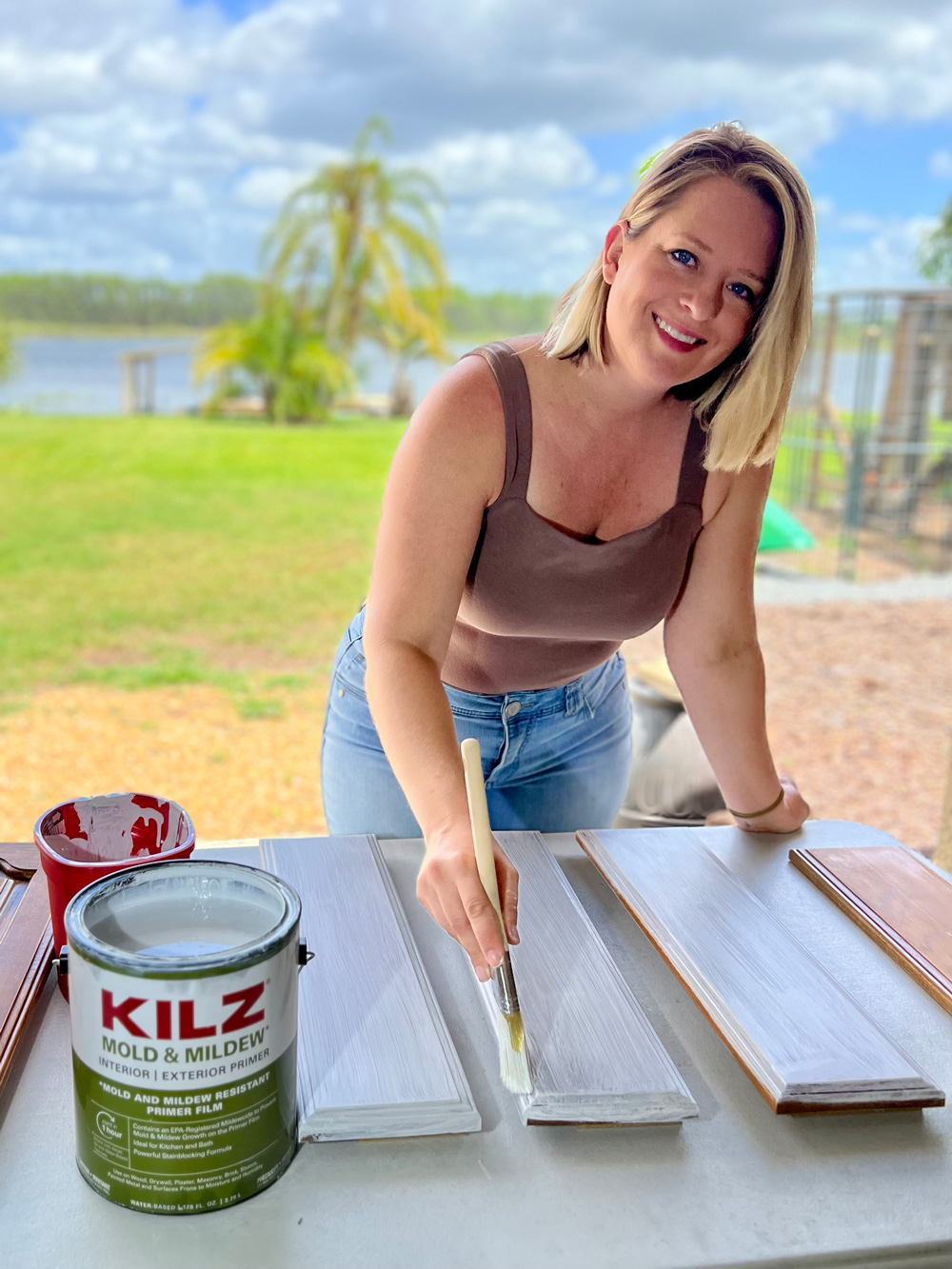 In the garage, I used a few drop cloths to make sure everything stayed clean and pristine. I set up two tables to create an “assembly line of painting,” where I would sand, prime, and paint. The cabinets were solid wood but had a lacquer finish that I wanted to make sure we could cover. To start the process and ensure a beautiful end result, I scuff sanded down all of the doors and drawers with 150-grit sandpaper and then did a final pass with 220-grit paper. Don’t forget to wear safety gear during this step, I made sure to wear a mask and eye protection.
In the garage, I used a few drop cloths to make sure everything stayed clean and pristine. I set up two tables to create an “assembly line of painting,” where I would sand, prime, and paint. The cabinets were solid wood but had a lacquer finish that I wanted to make sure we could cover. To start the process and ensure a beautiful end result, I scuff sanded down all of the doors and drawers with 150-grit sandpaper and then did a final pass with 220-grit paper. Don’t forget to wear safety gear during this step, I made sure to wear a mask and eye protection.
After sanding, I was ready to prime! The primer that we used for this project was KILZ® MOLD & MILDEW Primer. This primer is a water-based, primer-sealer-stain blocker that is specially designed for residential surfaces in high humidity, moisture, and temperature environments such as kitchens, bathrooms, powder rooms, and laundry rooms.
KILZ® MOLD & MILDEW Primer offers excellent adhesion to the surfaces of the bathroom cabinets, ensuring that the paint would stick and stay in place even with high moisture levels typical of bathrooms. Additionally, the EPA-registered active ingredient in this primer creates a mold and mildew-resistant film that protects the primer film from developing mold and mildew growth.
This was particularly important for this personal renovation project for my mom, as it would ensure that her bathroom cabinets would stay mold-resistant in the damp environment. The primer also helped us to achieve a smooth and flawless paint finish.
I applied one coat of KILZ® MOLD & MILDEW Primer, allowing it to dry for 2 hours before moving on to the topcoat. We chose Magnolia Home by Joanna Gaines® Cabinet and Trim Paint which I was excited to use for the first time. My mom looked at the color options online and choose the color “Emmie’s Room” which is a very light shade of green.
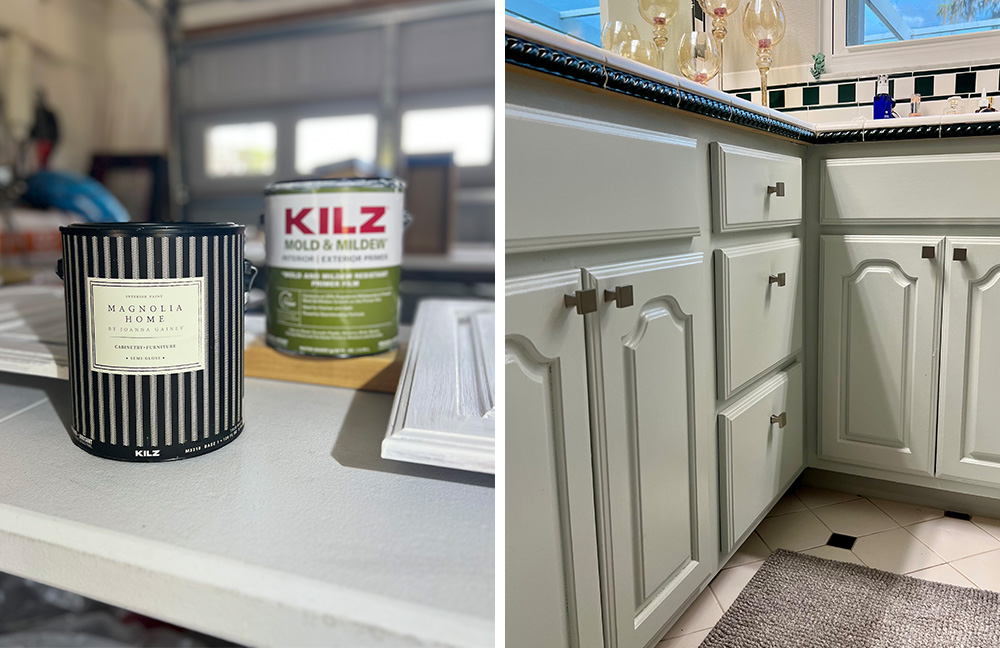
This very light green color complemented the existing white and green tiles in the bathroom perfectly, creating a cohesive and modern look. We applied two coats of the topcoat, allowing each coat to dry completely before applying the next. The final result was stunning and transformed the old and dated bathroom cabinets into a fresh modern look and personally, I think it made the room look much larger.
Not only did this bathroom cabinet refresh make the room look brighter and more modernized, but it also saved my mom a significant amount of money compared to a complete bathroom renovation. When I finally let her come in to see the final results, she couldn’t believe it was the same cabinets. She told me they looked brand new and straight out of a home renovation TV show.
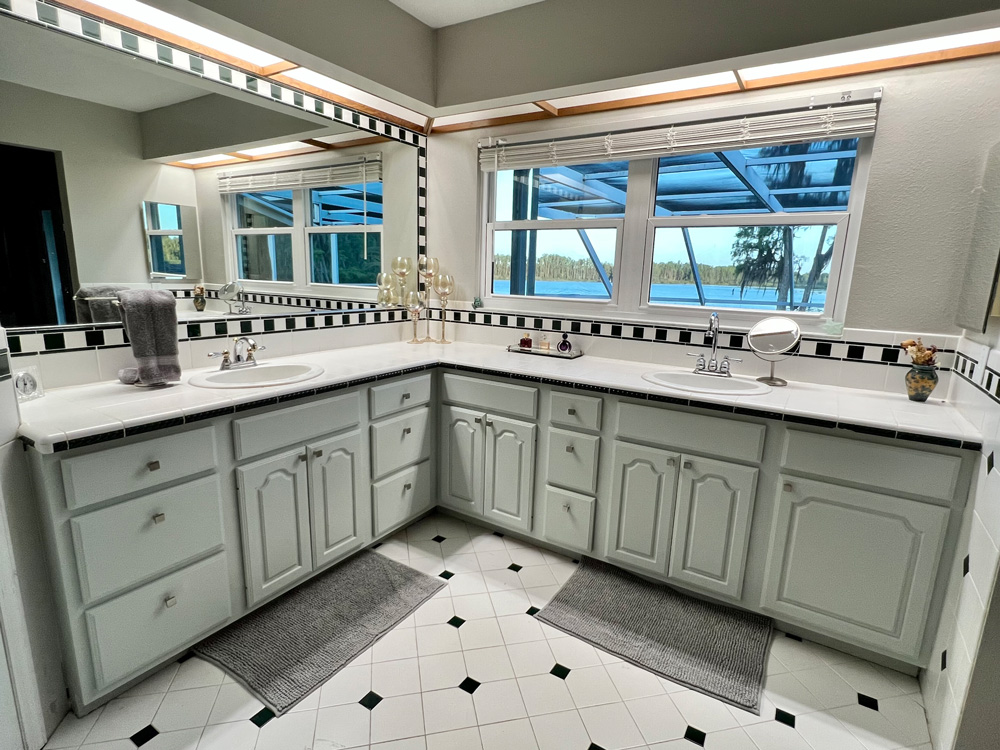
In conclusion, priming is a crucial step in any paint project, no matter how big or small. Not only does it set the foundation for a long-lasting and beautiful finish, but it also ensures that the paint adheres properly to the surface. KILZ® MOLD & MILDEW Primer is an excellent choice for bathrooms and kitchens.
Overall, this project was a personal one for me, as it was a renovation for my mom, who has been my biggest supporter throughout my career. Recently, we started renovating a few investment houses together so it was an honor for her to ask me to work in our family home as well. With KILZ® MOLD & MILDEW Primer and the right workspace, we were able to achieve a beautiful and modernized look for her bathroom cabinets.
To learn more about primer solutions, visit kilz.com.
Always remember to refer to our website kilz.com or product back labels for additional information on which primer is right for your project and detailed instructions on how to apply our products. Check out our Coverage Calculator to understand your estimated paint needs for your upcoming project.
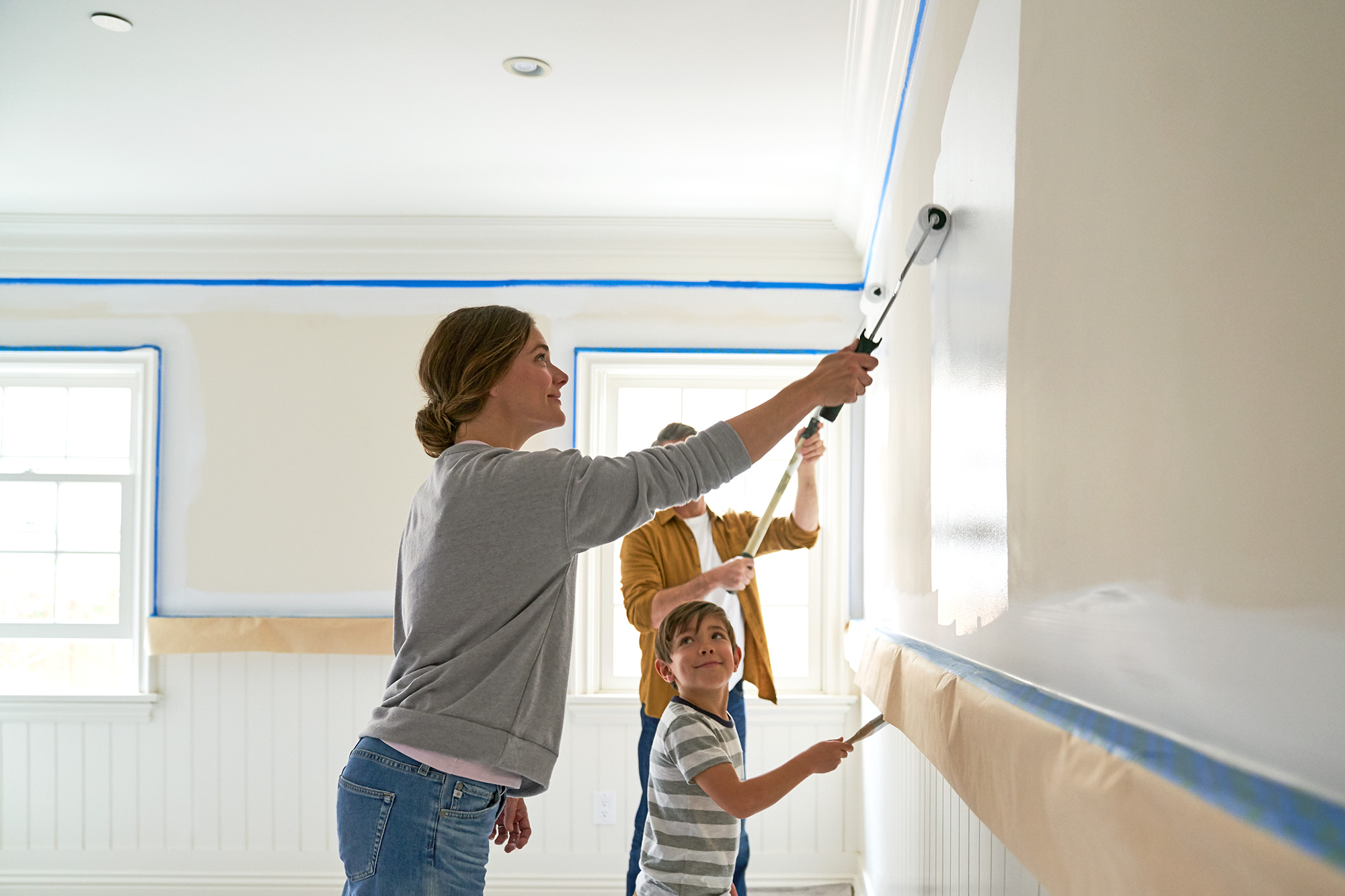
The Ultimate Painting Checklist for Any Project
April 26, 2023Preparation is key before starting any paint project in your home. You should know the products you’ll need and what steps to follow. Whether you’re looking to spruce up some old cabinets, repaint an entire room, or refresh an outdoor patio, knowing what to expect will help ensure things run smoothly from start to finish.
Plan Your Approach
There’s a lot to consider when painting different spaces. For indoor and outdoor paint jobs alike, you’ll need to think about the surface—wood, brick, drywall, etc.— its condition, and the function of the space. Are you painting a backyard deck or refreshing kitchen cabinets? Are you changing the color of your bedroom or restoring a water-stained ceiling?
The chosen primer directly influences the success of your project. This crucial step will save you time and money in the long run and make your final color the best it can be.

Choose Your Color
With so many available options, it’s a good idea to test a few different color samples in various lighting conditions before making a final decision. If you’re keeping existing furniture or art in a room, consider how they work with your chosen shade beforehand.
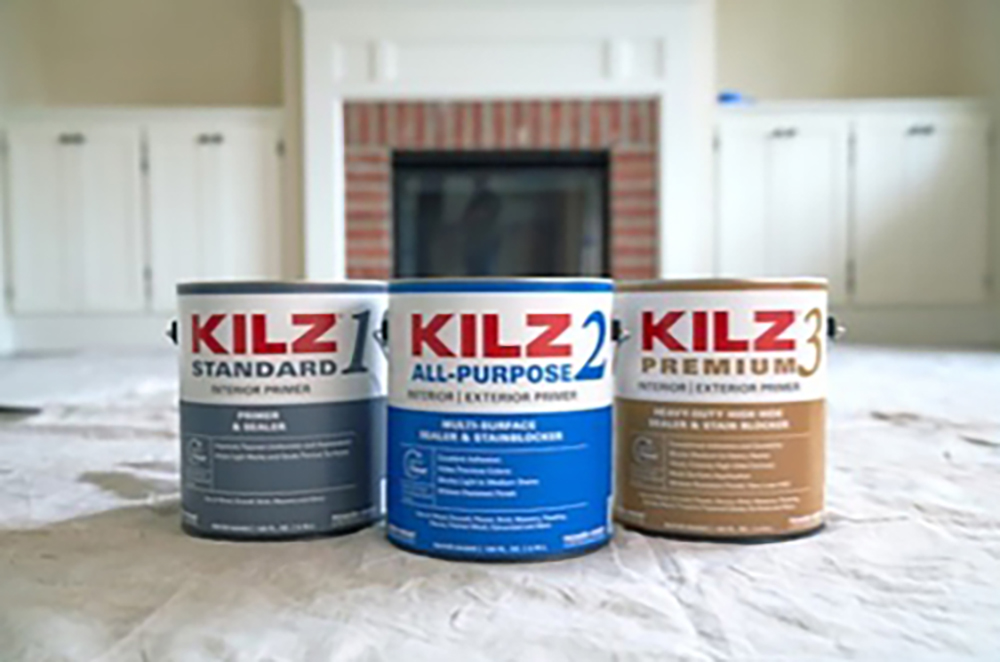 Choose the Right Primer
Choose the Right Primer
For most projects, you can trust a multi-surface primer to prepare the surface for painting. More complex situations require a primer specially engineered for those cases—such as mold, stain, and odors.
Oil-based primers are often better at blocking or sealing stains, especially water-soluble stains. They’re also usually superior at blocking tannin bleed and unwanted odors.
• Choose to prime over a previous oil-based paint.
• Choose to prime on fresh, unsealed, or knotty wood.
• Choose if you need to cover severe stains or odors.
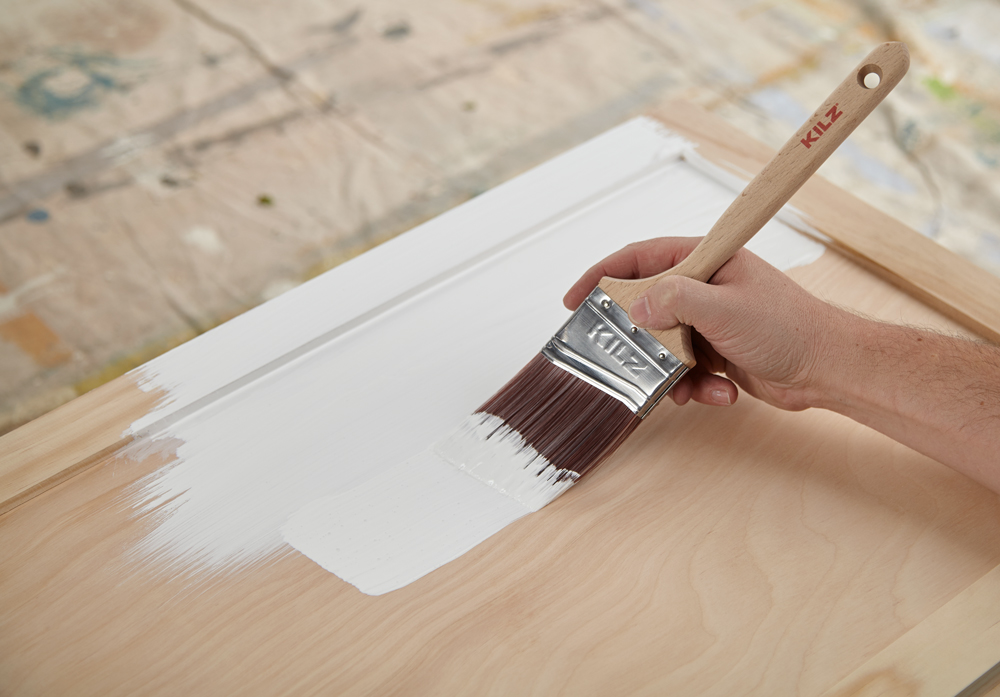
Water-based primers—or “latex” primers—are easier to clean (using soap and water), dry fast, and have low VOCs, making them healthier for you and the environment.
• Choose if priming indoors where ventilation is poor and in spaces sensitive to strong odors.
• Choose when projects require a lower VOC level product, if there is a flammability concern, and/or when there is a preference for clean-up without harsh chemicals.
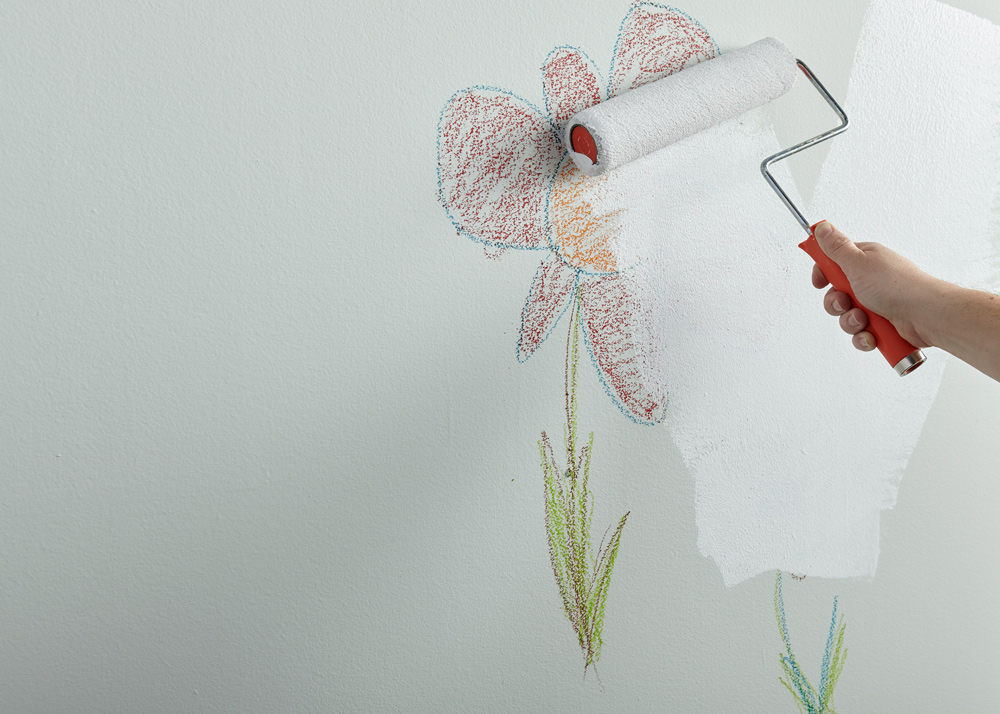
Our Pro Primer Recommendations:
• KILZ® Mold & Mildew Interior and Exterior Primer: Water-based primer. Ideal for use in high humidity, high moisture, and high-temperature environments.
• KILZ Restoration® Interior Primer: Water-based primer. Ideal for interior, multi-surface paint jobs that may require tough stain blocking and heavy odor coverage.
• KILZ 2® All-Purpose Interior and Exterior Primer: Water-based primer. Great overall interior/exterior primer. Ideal for changing wall colors.
• KILZ 3® Premium Interior and Exterior Primer: Water-based primer. Fast drying, great for adhesion and hiding surface imperfections. It provides a mildew-resistant coating, making it ideal for moisture-prone areas.
What Else Do I Need to Paint a Room? (Supply Checklist)
Depending on the nature of the job, these items can make your life easier.
• Paint roller + Tray – Rollers hold more paint than brushes and can distribute even layers of paint much faster.
• Paint sprayer – For a smooth, professional finish.
• Paint scraper – Removes unwanted layers of paint.
• Trim paint brush – For trimming around windows, molding, and door frames.
• Painter’s tape – A must for creating precise lines and neat edges.
• Sandpaper – For smoothing and prepping surfaces.
• Putty knife – Creates a smooth wall or ceiling surface.
• Drop cloth – Use to protect your furniture and floors.
• Stepladder – For reaching ceilings and the tops of walls.
• Extension pole – To extend your roller’s reach without a ladder.
• Paint guide (edge guard) – Neatly paint molding, trim, and windowpanes without painter’s tape.
Any painting project takes focus, but having the right plan, primer, and tools ahead of time will save you time and money and make you feel like a pro in no time. We hope this inspires your next project, no matter how big or small. Be sure to come back to the blog for more DIY tips, tricks, and ideas.
Always remember to refer to our website kilz.com or product back labels for additional information on which primer is right for your project and detailed instructions on how to apply our products. Check out our Coverage Calculator to understand your estimated paint needs for your upcoming project.
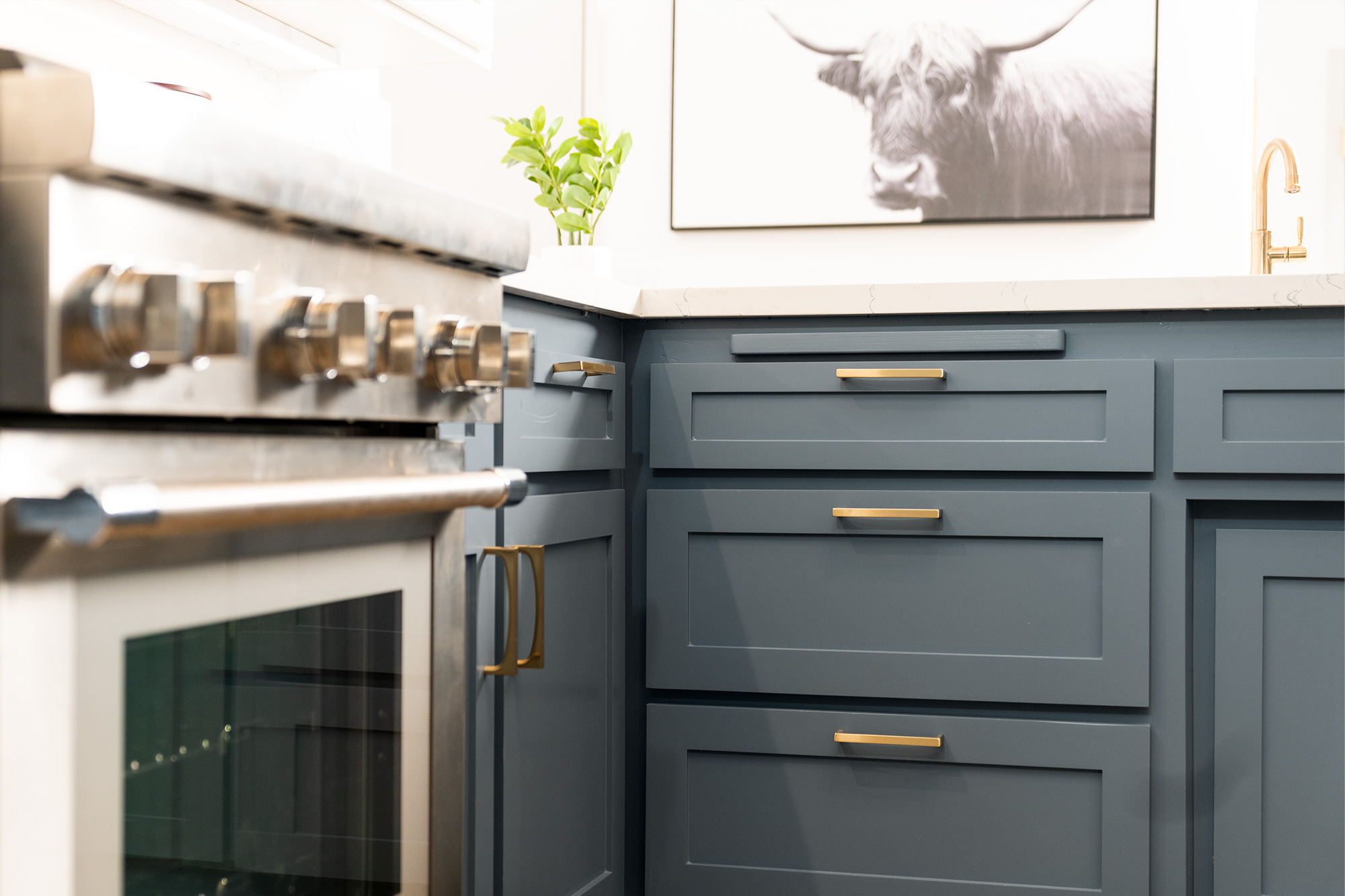
Updating a Kitchen for a New Generation
April 17, 2023We’re excited to share details from our Destination Restoration series with an inspired kitchen refresh that doesn’t require gutting the entire kitchen. This series demonstrates how you can breathe new life into an older home (in this case, a 4th generation family home), while keeping its structural integrity intact.
Our expert design and restoration team — Jason Lai (interior designer) and Jared Foster (contractor/pro painter) — worked together to transform a kitchen that was well past its prime. They first conceptualized which cosmetic changes would make the most impact, and then rather than gutting the entire room and starting from scratch, they repurposed and restored. By refreshing dull wooden cabinets, creating bar seating with a stunning new look, replacing heavy black appliances, and updating hardware, countertops, and backsplash, they transformed a dark and dated kitchen into a bright, airy, and modern one, renewing it for years to come.
If it’s your first time restoring a kitchen, it can feel like a big undertaking, which is why we broke down what we did below, so you can get a more detailed understanding of how we upgraded the heart of the home. We’ve also included a step-by-step guide on how to paint kitchen cabinets for a refresh.
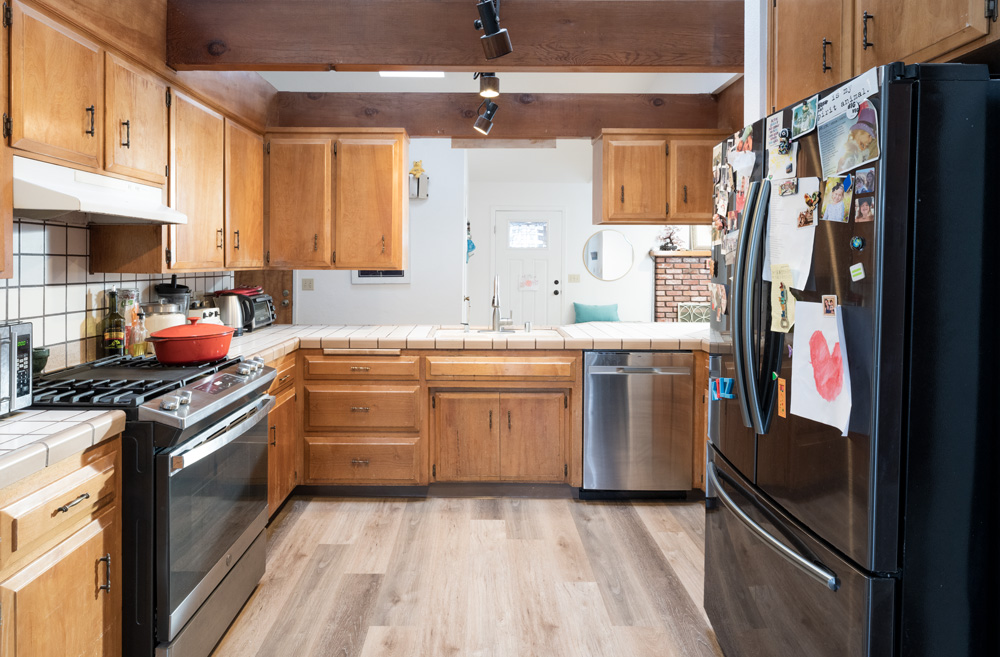
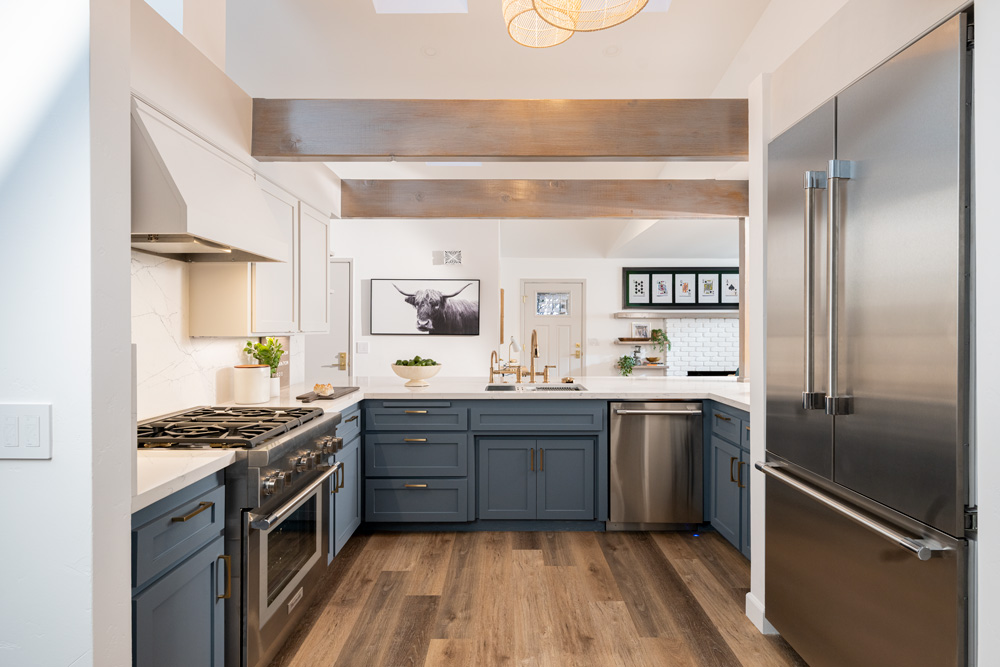
Cabinetry
Rather than ripping out and replacing the cabinetry, which can be costly, we gave them a brand-new look and feel with a few simple updates. We removed some of the upper cabinets and modernized the rest by making them shaker style. Then we used KILZ 3® Premium Primer to prep them for a fresh coat of paint. To create some contrast and brightness in the room, we chose Charcoal Blue for the lower cabinets and Chic Grey for the upper, both colors by Behr Paint. Finally, we fitted them with all new hardware.
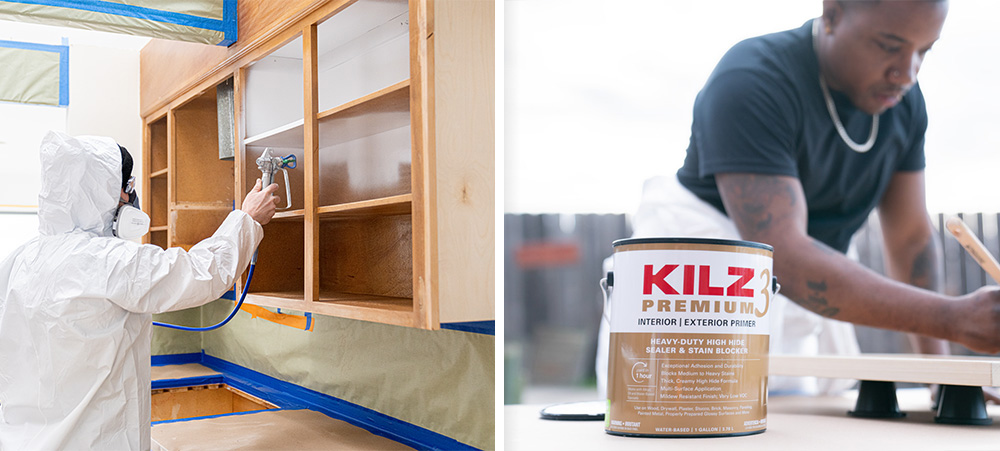
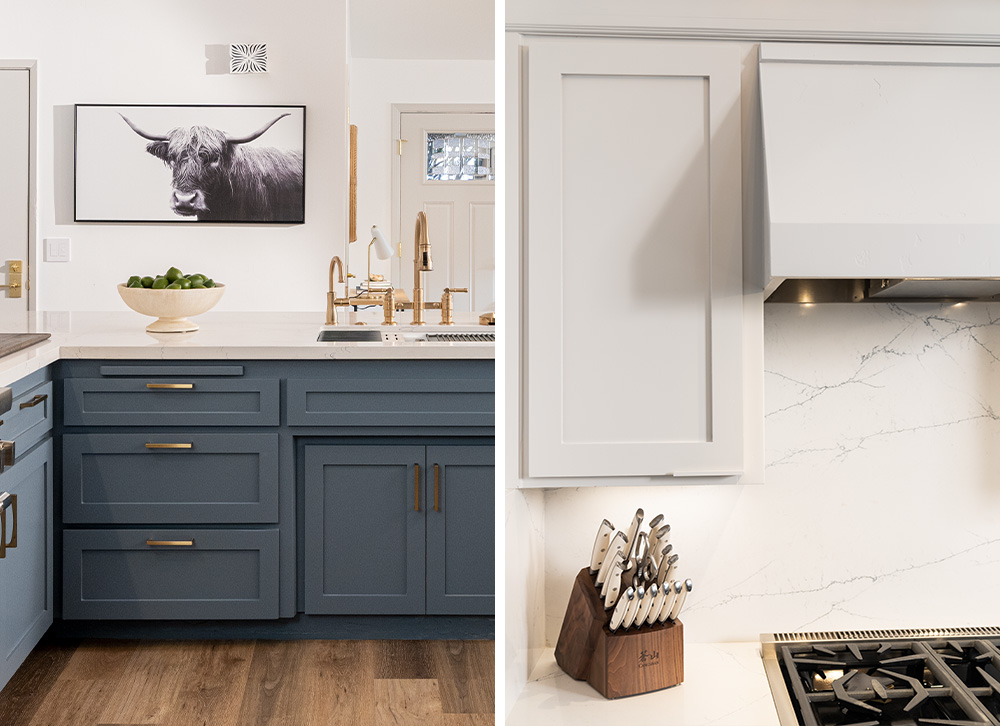
Ceiling
Because it wasn’t structural, we removed the center beam and stained the remaining beams to match the floors. (Check out the Living/Dining Room restoration to see where that center beam ended up!) We also installed recessed lighting by Kichler Lighting and rattan pendant lights.
Appliances & Additional Lighting
We updated the hood vent, oven, dishwasher, and refrigerator with stainless steel appliances for a sleeker, modern look. To ensure the hood vent matched the upper cabinets, we plastered, primed (again using KILZ 3 Premium Primer) and painted it using the same Chic Grey (a color by Behr). Finally, we installed under cabinet lighting by Kichler, added new electrical outlets throughout, and updated all electrical switches.
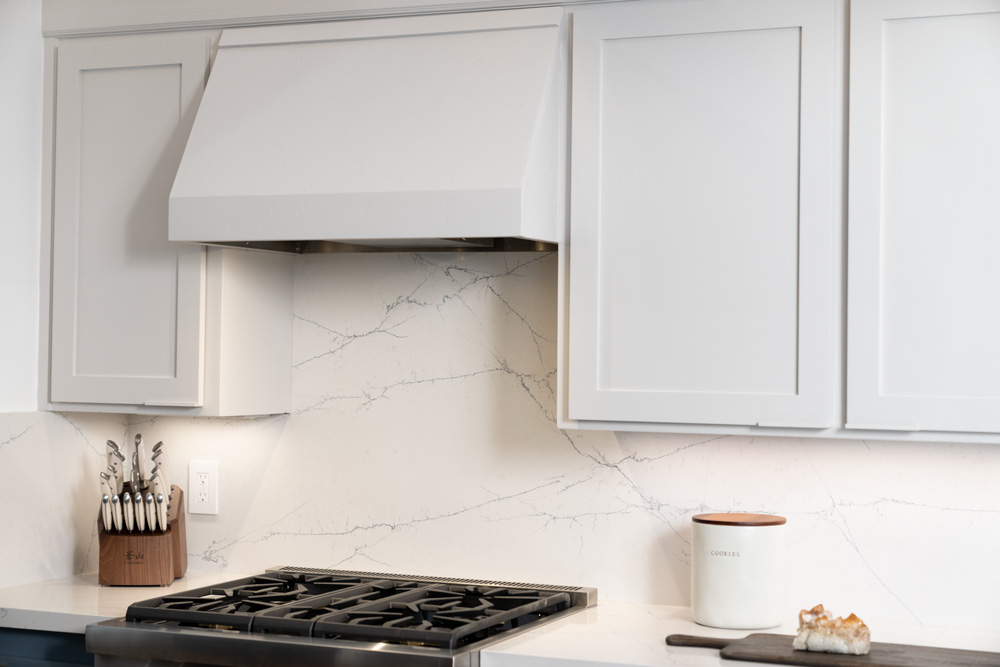
Other Changes
We updated the tile countertops and backsplash with a modern, white marble finish. To extend the bar, we added rounded lower cabinets and primed them (using KILZ 3 Premium Primer) for paint (Charcoal Blue by Behr) to match the others. Lastly, we added a 1×1 rail texture detail under the counter with hidden outlets. The sink, faucet, glass rinser, filtered water faucet, and hardware were all updated new products by Delta Faucet to complement the new look.
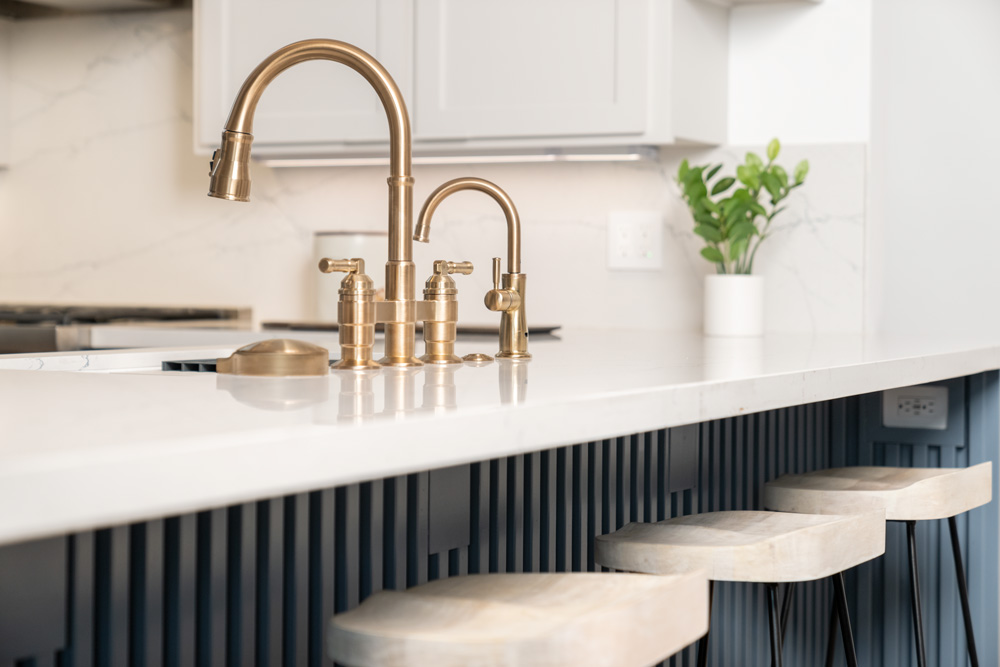
Why Do You Need to Prime?
Priming is essential for proper surface preparation for any paint project. It’s the difference between a job done and a job done right. Priming helps solve a wide range of problems, including highly porous surfaces, stains, odors, uneven surfaces, texture differences, and adhesion problems.
For this kitchen cabinet facelift we used, KILZ 3® Premium Primer, which is ideal for high-touch surfaces and humidity protection. It was perfect for our cabinet refresh thanks to its exceptional adhesion and ability to hide blemishes, stains, and other imperfections, which can accumulate over time, especially in older, generational homes like this one.
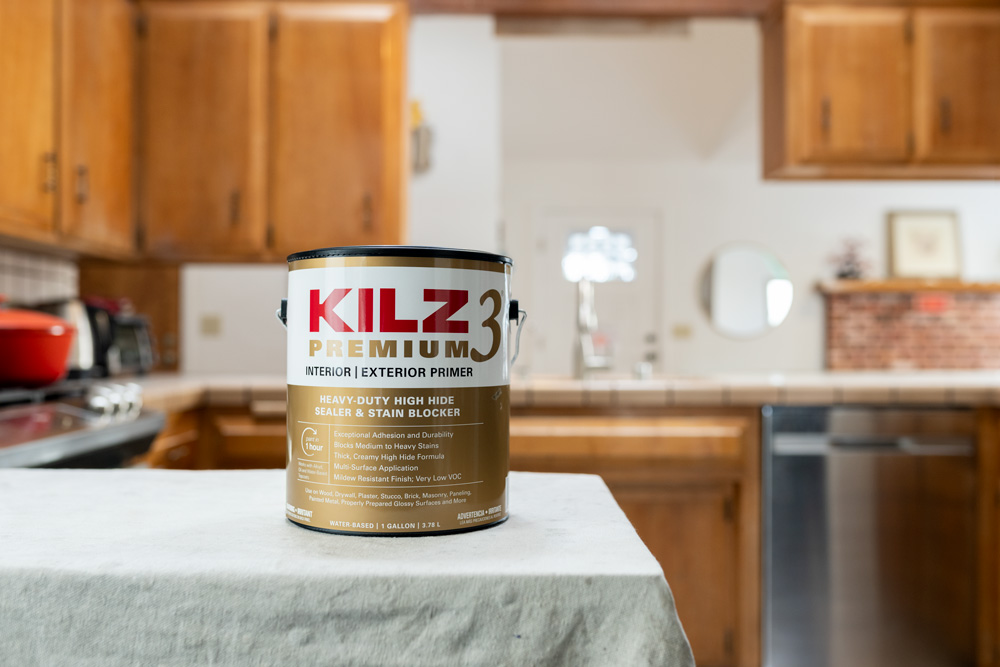
Step-By-Step Guide to Refinish Kitchen Cabinets:
Painting wood kitchen cabinets requires a few basic steps to get the smoothest finish and lasting results. Here’s an easy guide to follow for your next project:
1. Use a screwdriver to remove the cabinet doors and drawers from the cabinet frames and to remove all door handles and hardware.
2. Sand the surfaces of the doors, drawer faces, and cabinet frame to create a smooth surface for priming. Do a first pass with 100-150 grit sandpaper then finish with a second pass of 180-220 grit sandpaper. Remember, the higher the “grit” number, the smoother the finish.
3. When sanding, move the sandpaper in the same direction as the wood grain. If you go against the grain, you will end up with a lot of scratches that will show through your topcoat.
4. After sanding, wipe down the surface with a damp cloth to remove any dust or residue. Allow to dry.
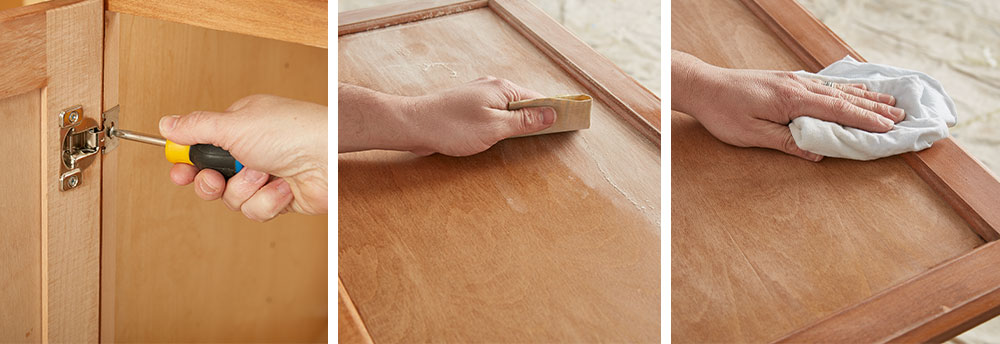
5. Protect your floors and workspace from paint and primer by covering it with a drop cloth.
6. Now it’s time to prime! Using KILZ 3® Premium Primer, use a brush to make smooth strokes that go in the same direction as the wood grain.
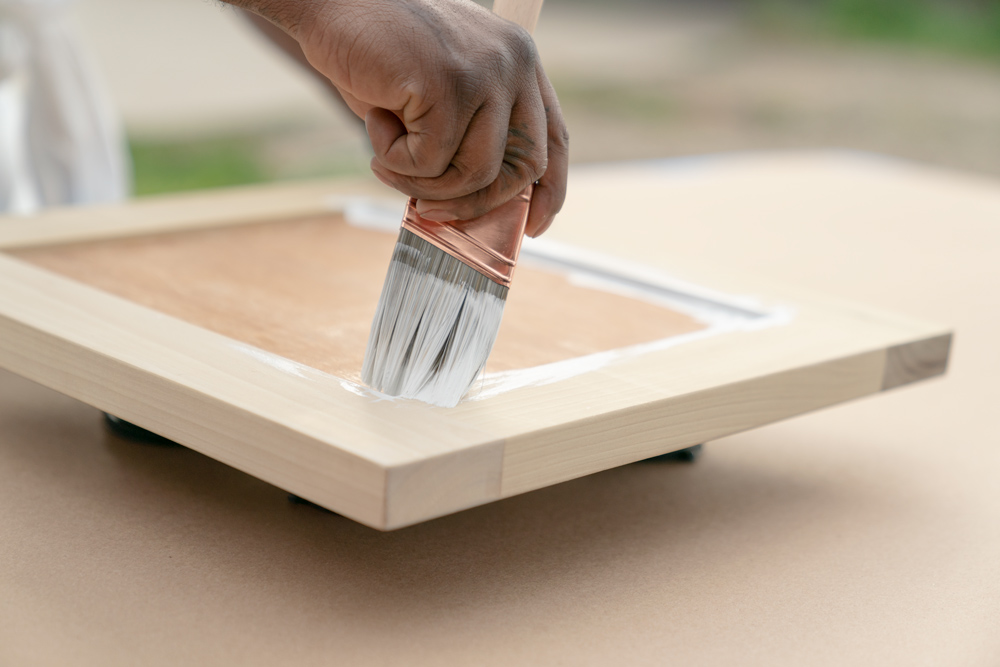
• Pro-tip: To get better coverage along the sides of your door, raise it off your work surface with bricks.
7. Allow to dry for 2 hours.
8. Once the primer is dry, apply your kitchen cabinet paint of choice using the same application process at the primer.
• Pro-tip: For a really great result, apply primer and paint with a sprayer.
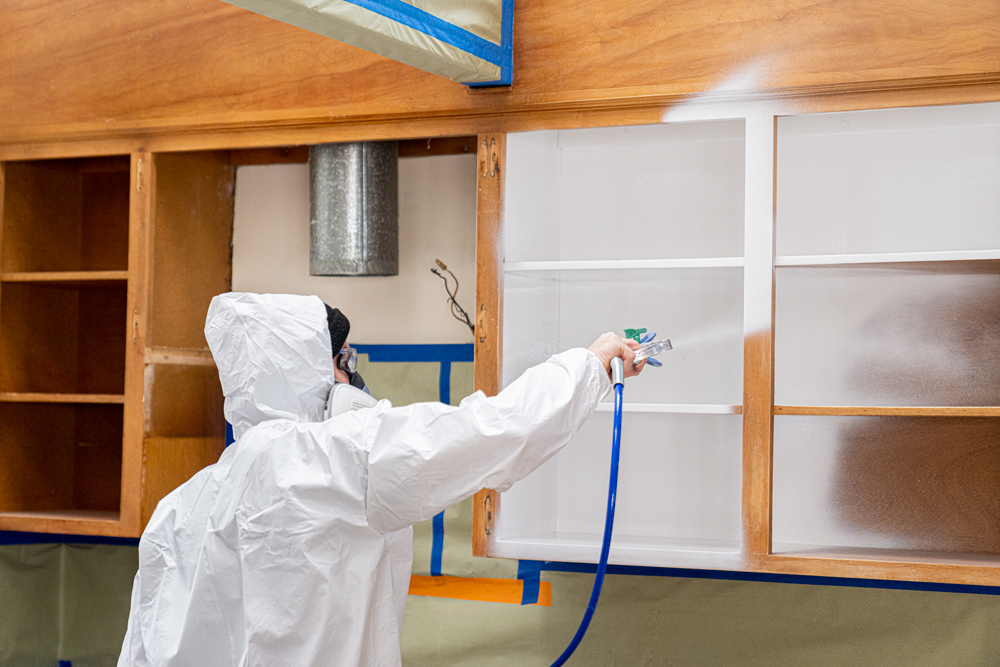
You Will Need:
• Screwdriver
• Dust mask
• 100-150 grit and 180-220 grit sandpaper
• Step ladder for hard-to-reach areas
• Rags to wipe dirty and dusty surfaces
• Painter’s tape
• Drop cloths, canvas, or other reusable material
• Paint roller, brush, and paint tray
• Paint of choice
We hope this episode of Destination Restoration inspires you to take on your own kitchen remodel this year. Be sure to keep KILZ® products in mind for your next project, and come back for more ideas, tips, and project inspiration.
If you loved this restoration, be sure to check out the other episodes of Destination Restoration. Jason and Jared took on the Primary Bedroom, Primary Bathroom, and Living/Dining Room.
Always remember to refer to our website kilz.com or product back labels for additional information on which primer is right for your project and detailed instructions on how to apply our products. Check out our Coverage Calculator to understand your estimated paint needs for your upcoming project.
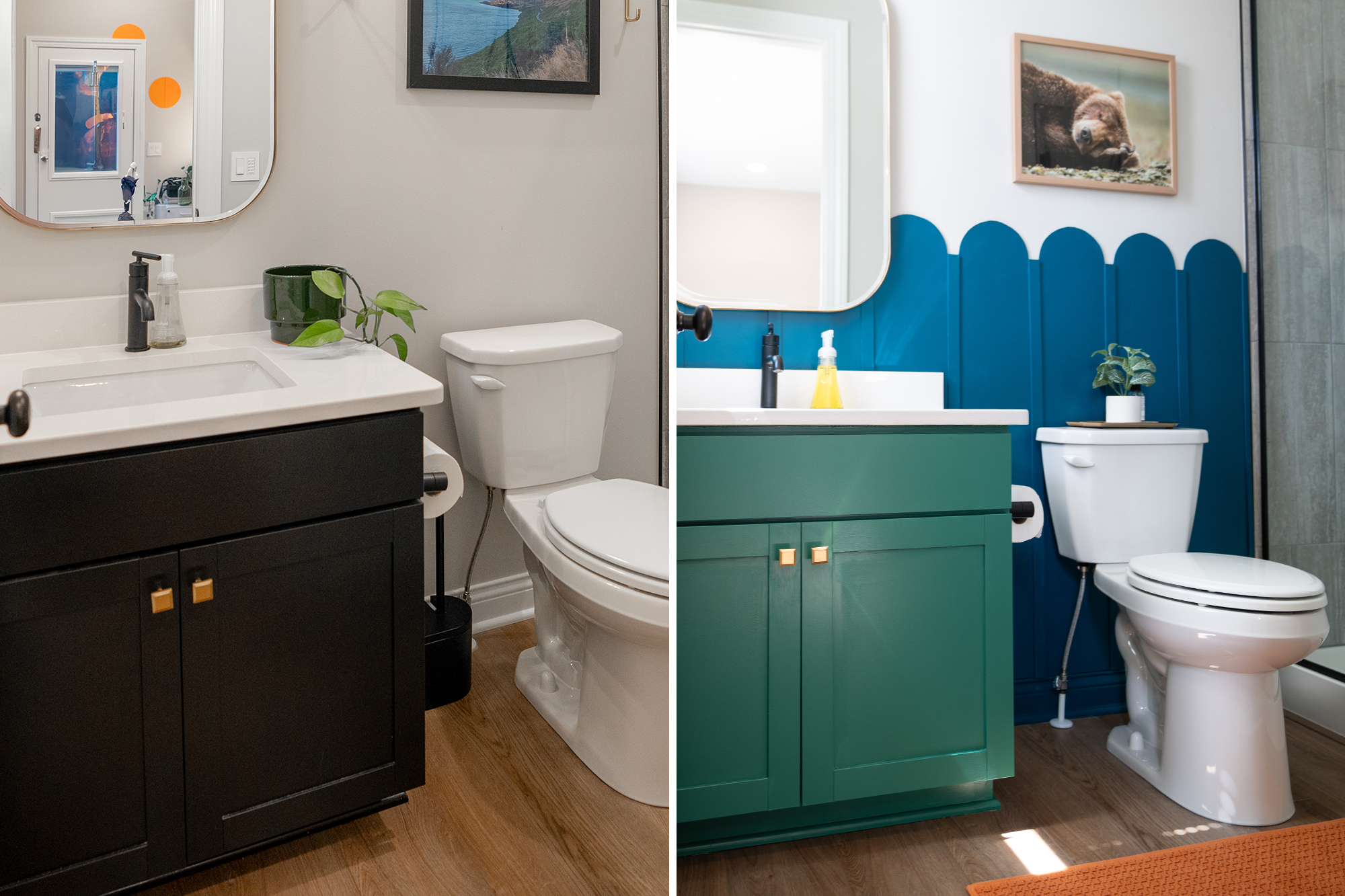
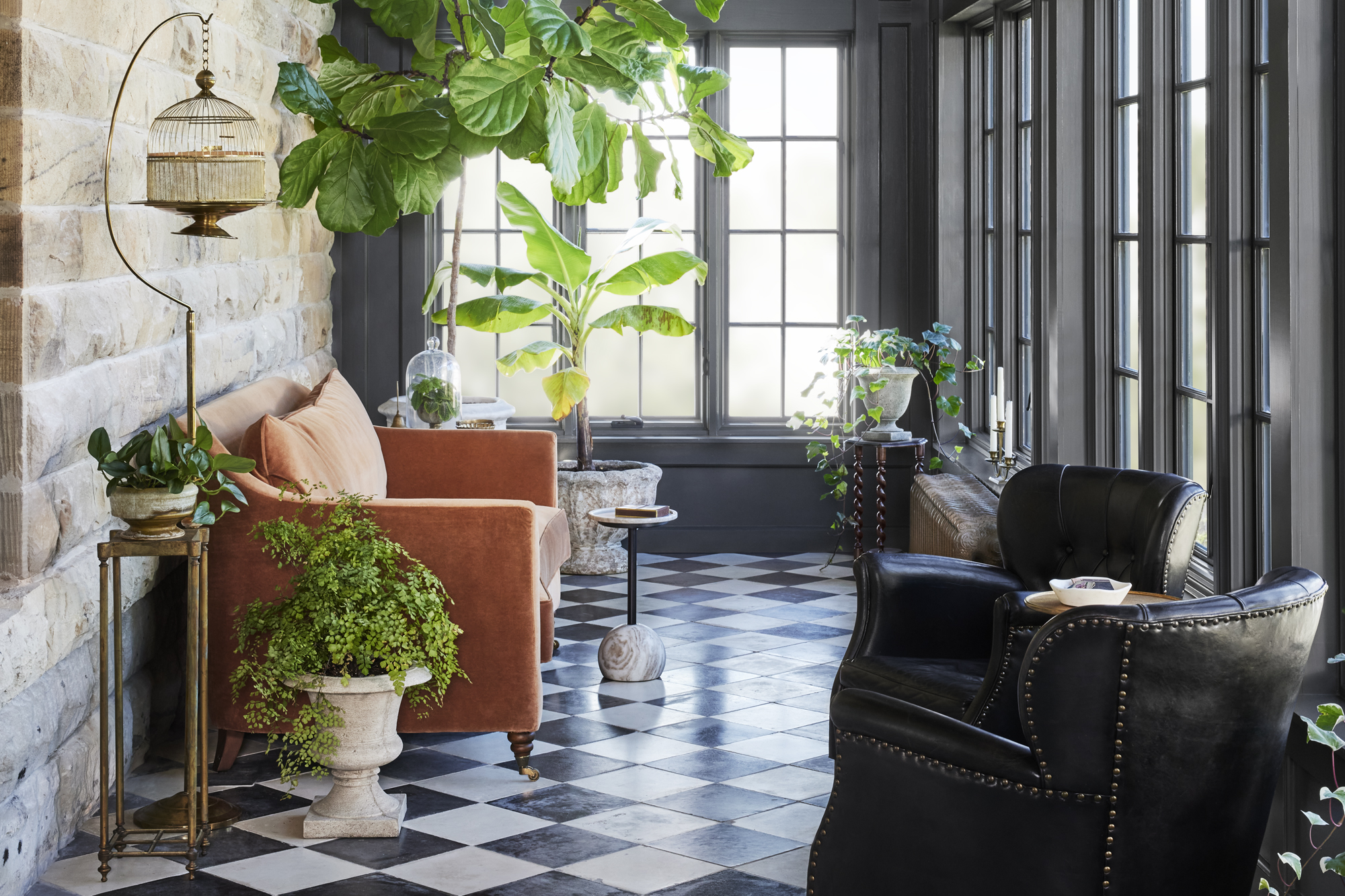

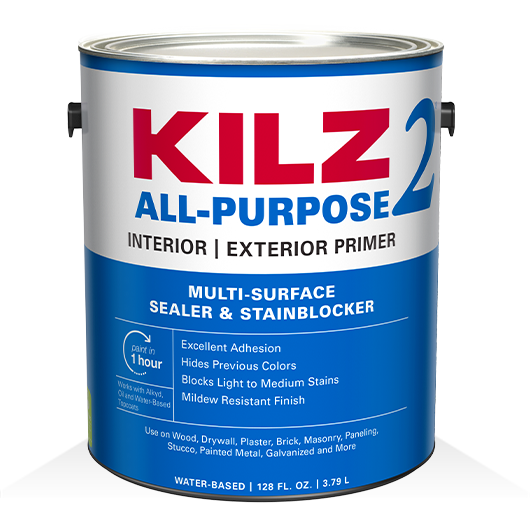
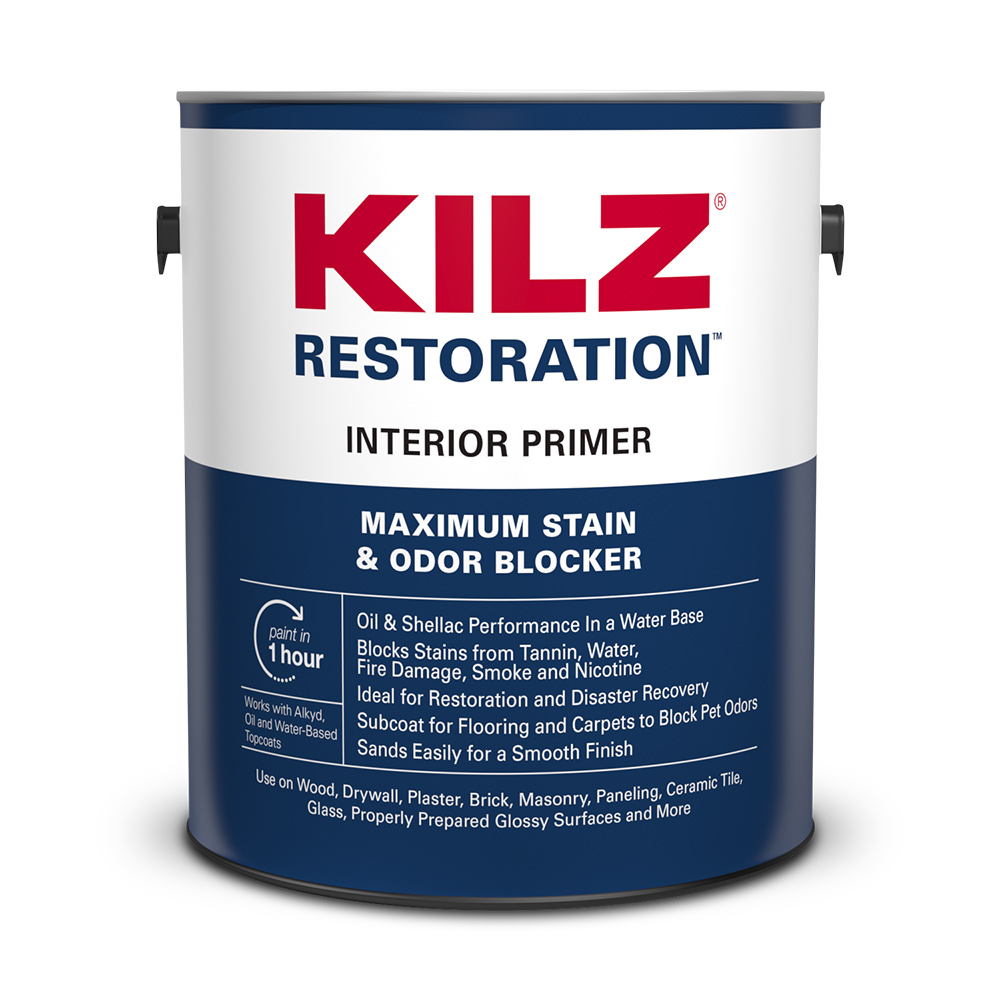

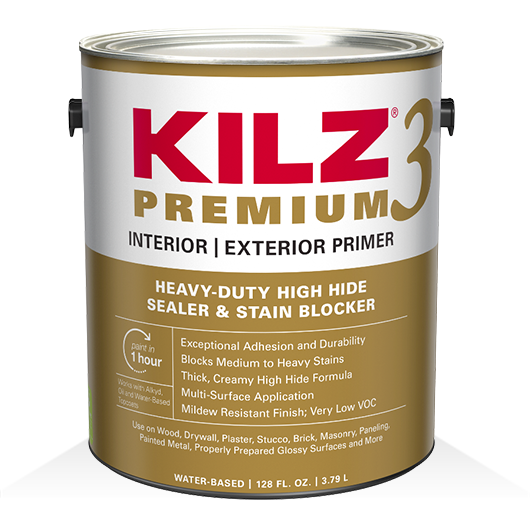
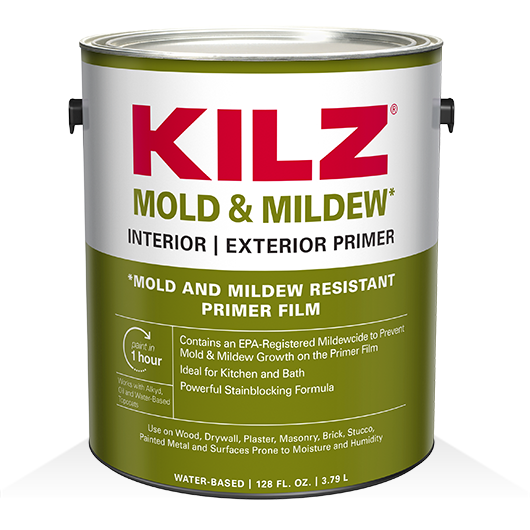
join the conversation:
SHARE this post: